The end of the beta project was used to look at the inside of my knitted pieces and how I could potentially mix my broken ceramic knit pieces with my non casted knitting. I decided to experiment with this idea of visible mending and the different ways I could connect my ceramic pieces together using my knitting.
Tutorial 17/10/24
Inspired me to think about the thinking of what fibres to pair with my ceramics. Can they be unravelled from a used piece? This theme of remaking and mending could make me think about my work in a different way. Could I refine my broken ceramic pieces using a cutting machine? Start experiment with colour, fibres, use of anchor points and stitches.
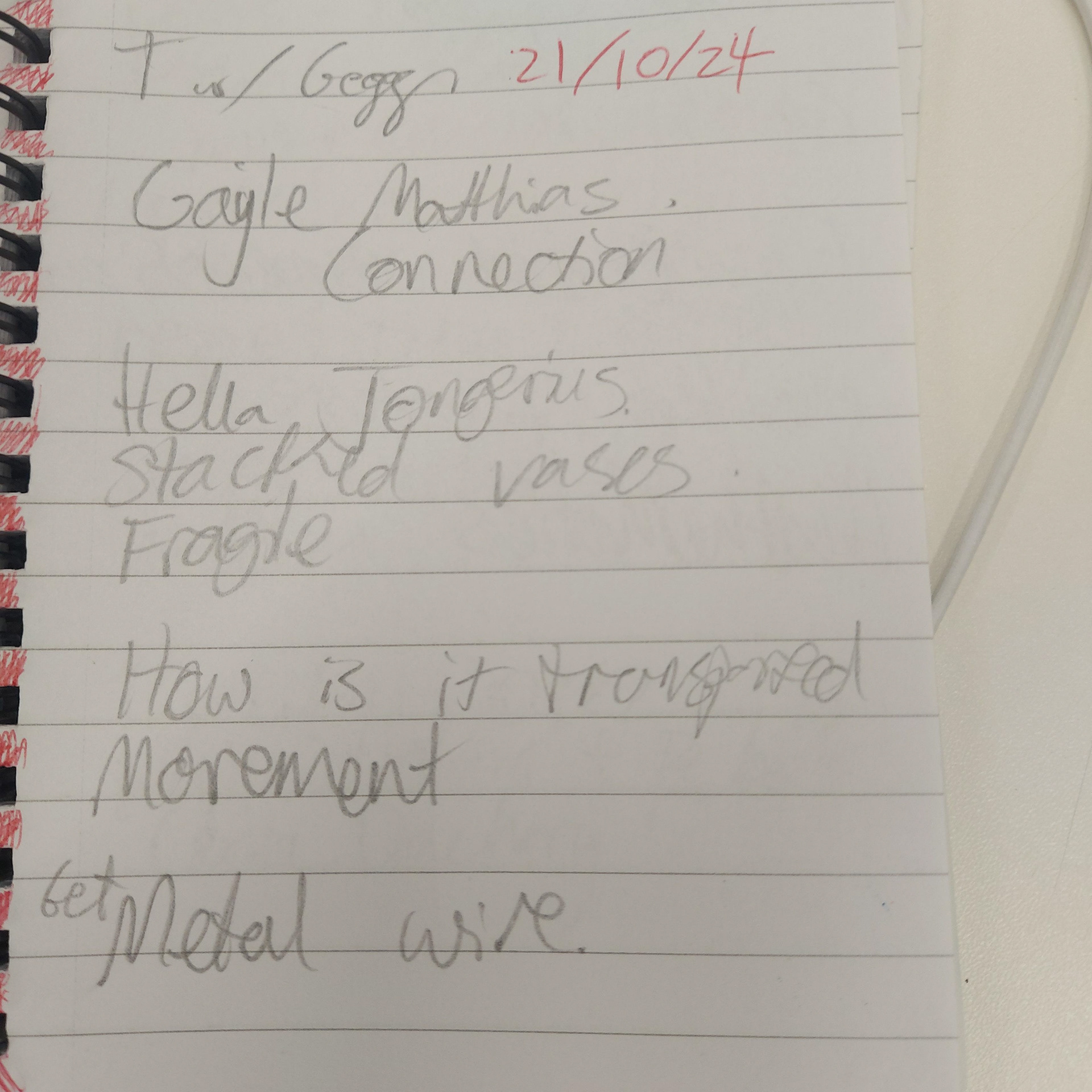
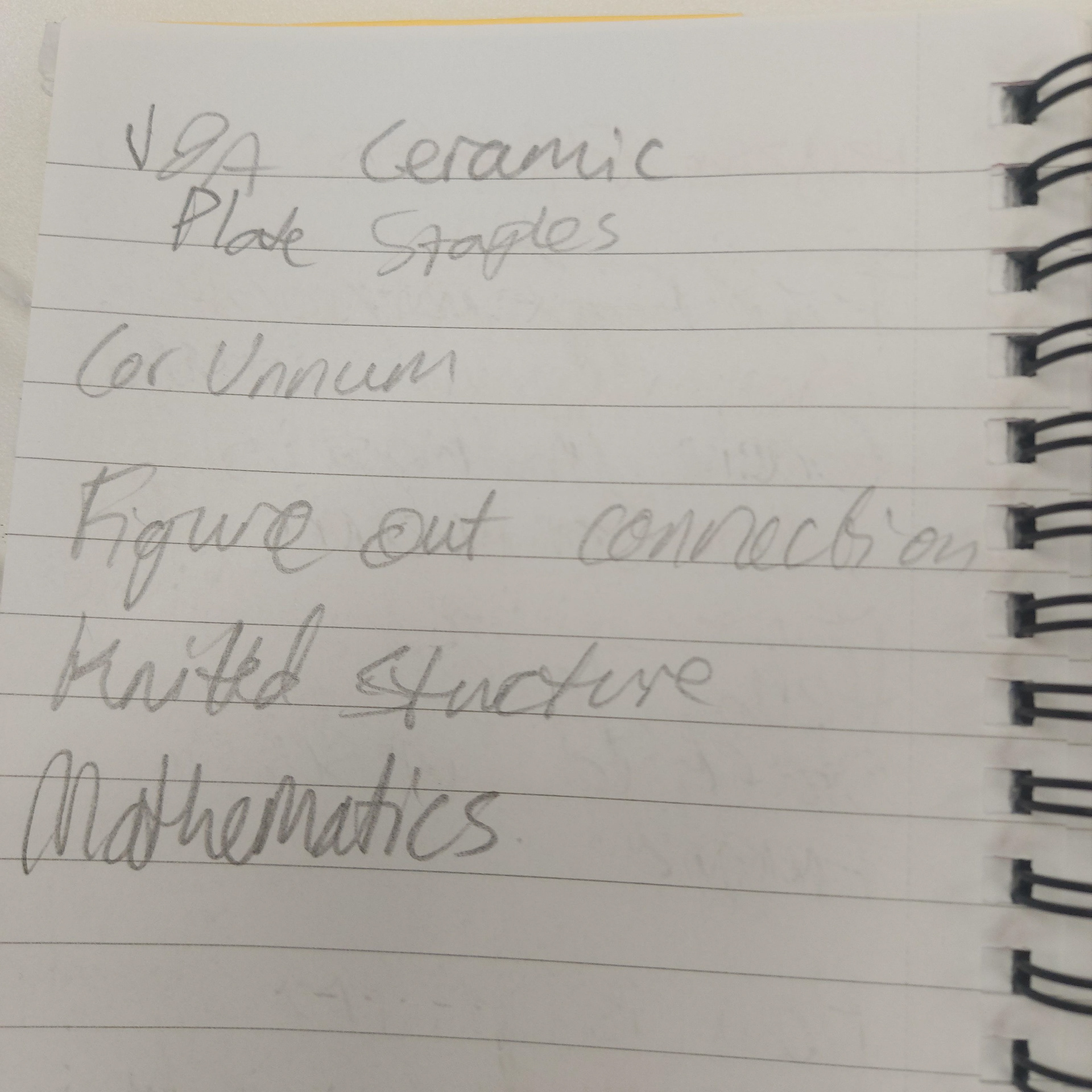
Tutorial 21/10/24 - prompted me to think how I could utilise different materials to connect the ceramics and knitting together.
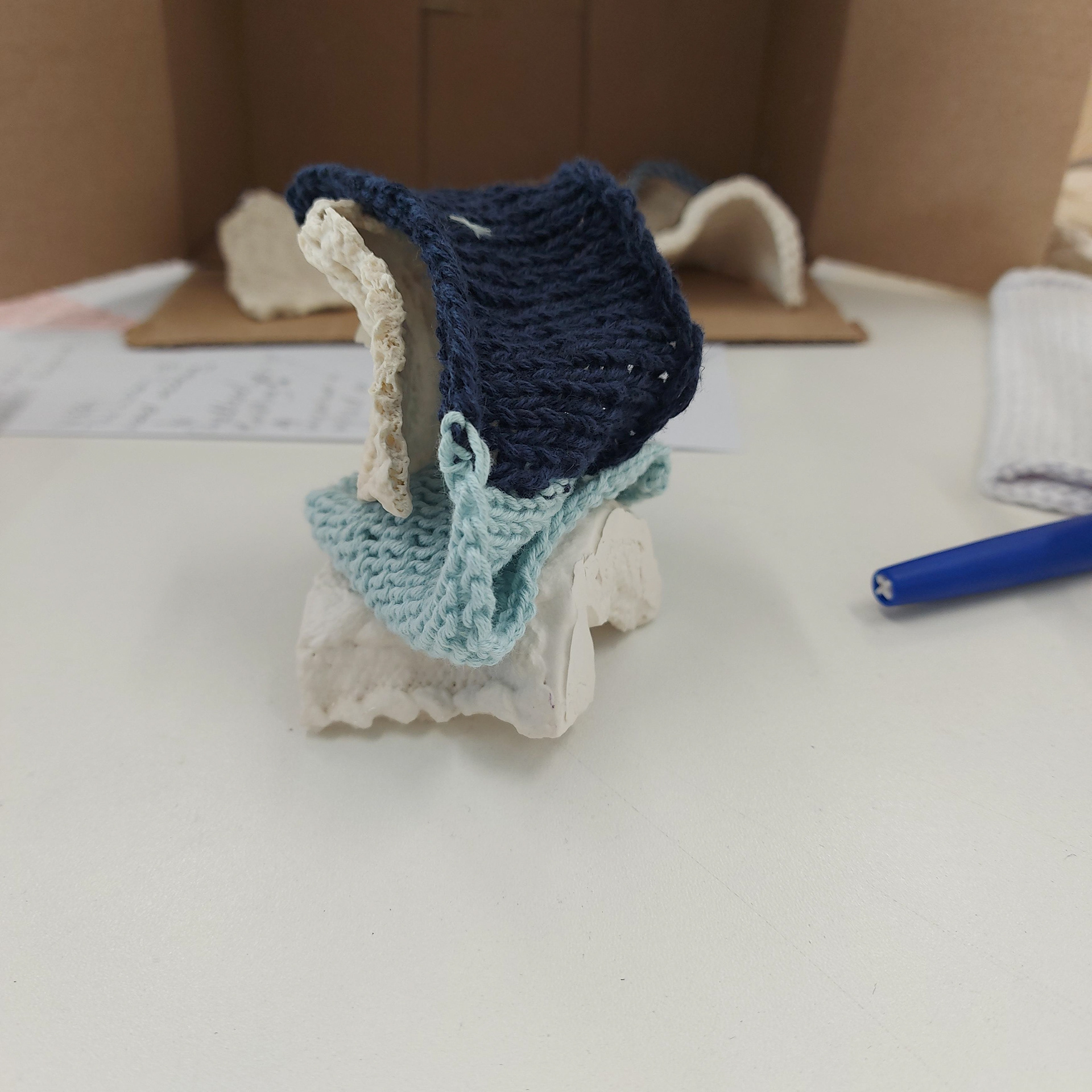
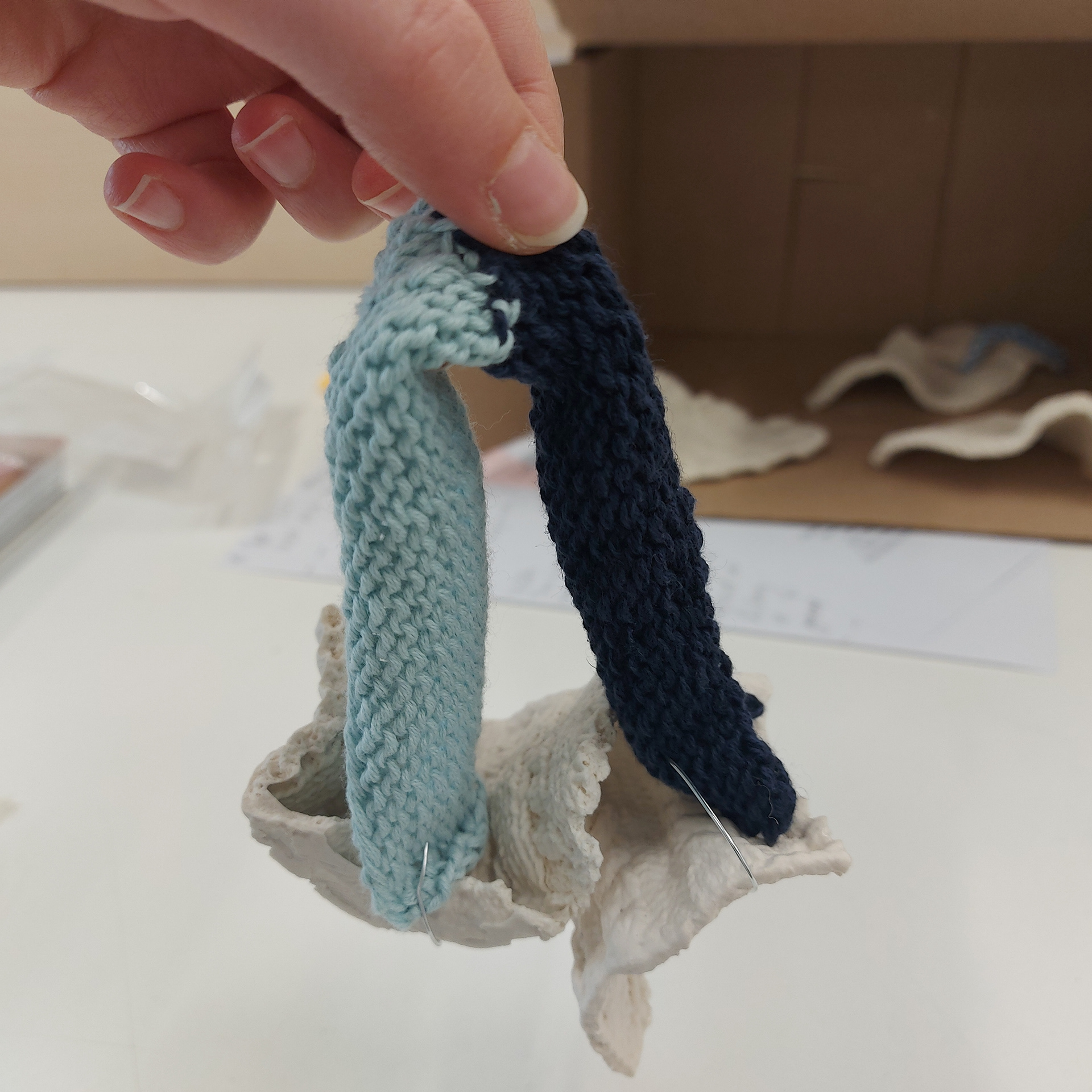

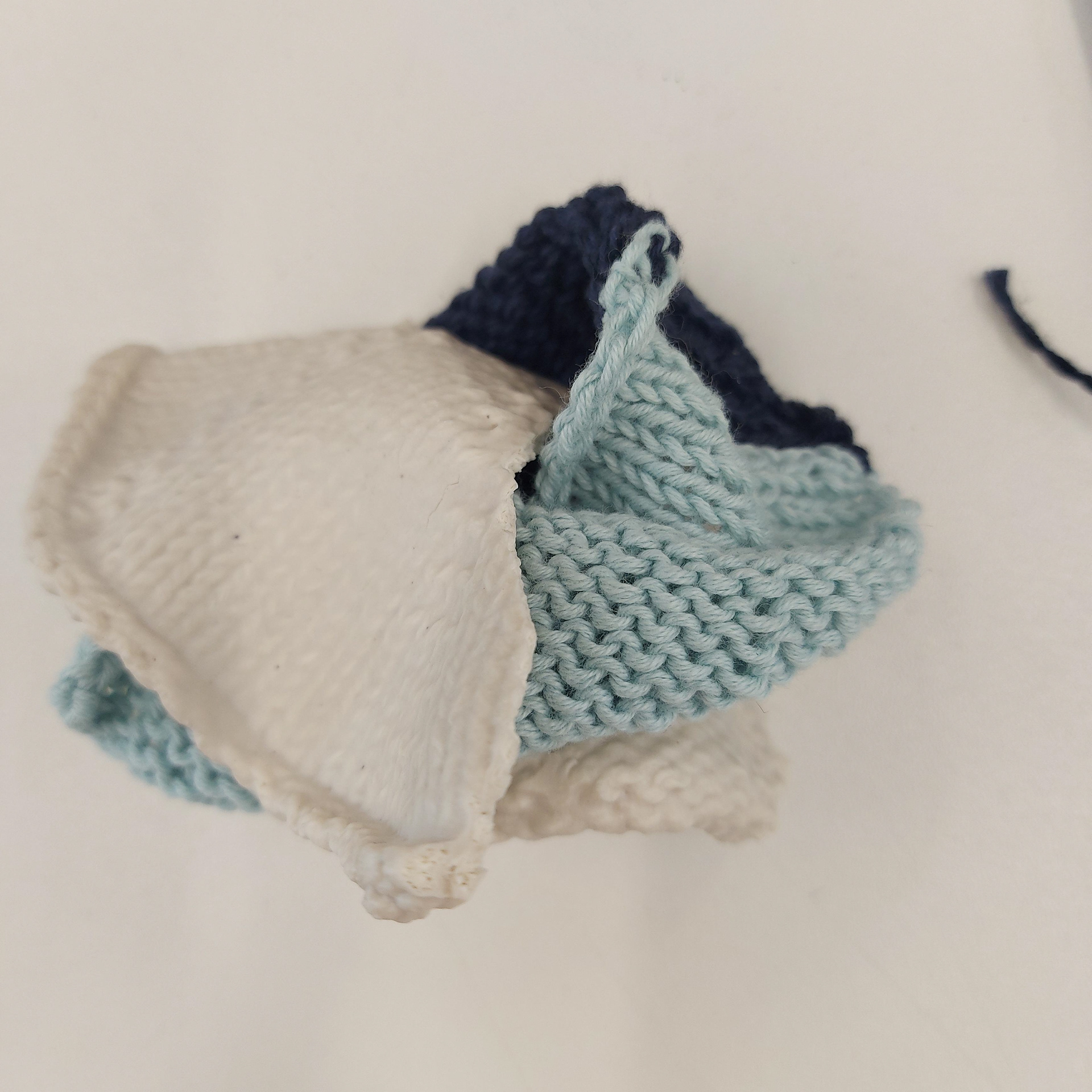
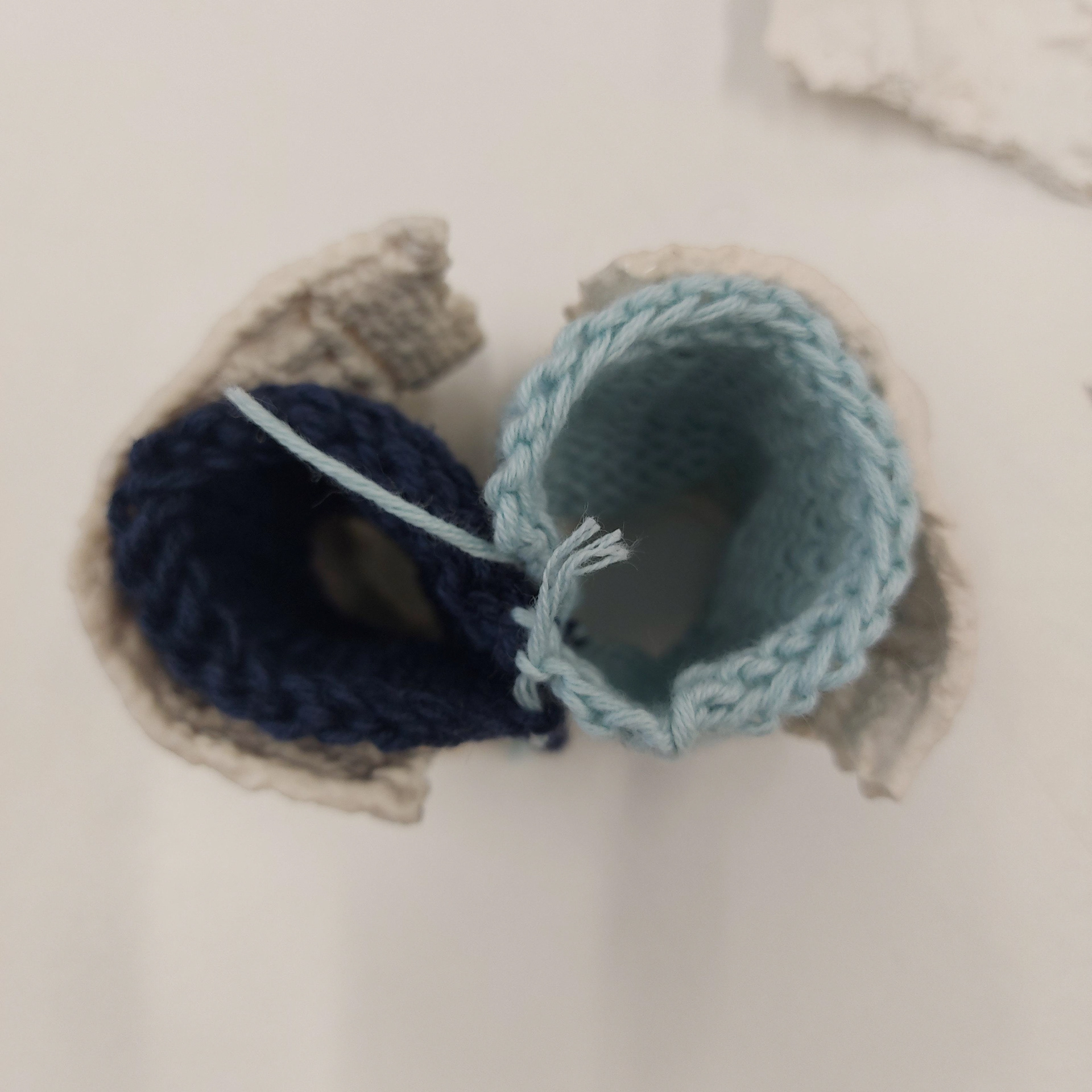
The above connections look at how I can use two different yarns that are knitted on two sides to connect different ceramic pieces together. I found that the strip of yarn worked well for connecting two pieces at either end, it was more difficult to use for hanging pieces and I mainly used it to see how the ceramic pieces moved by themselves when flat.
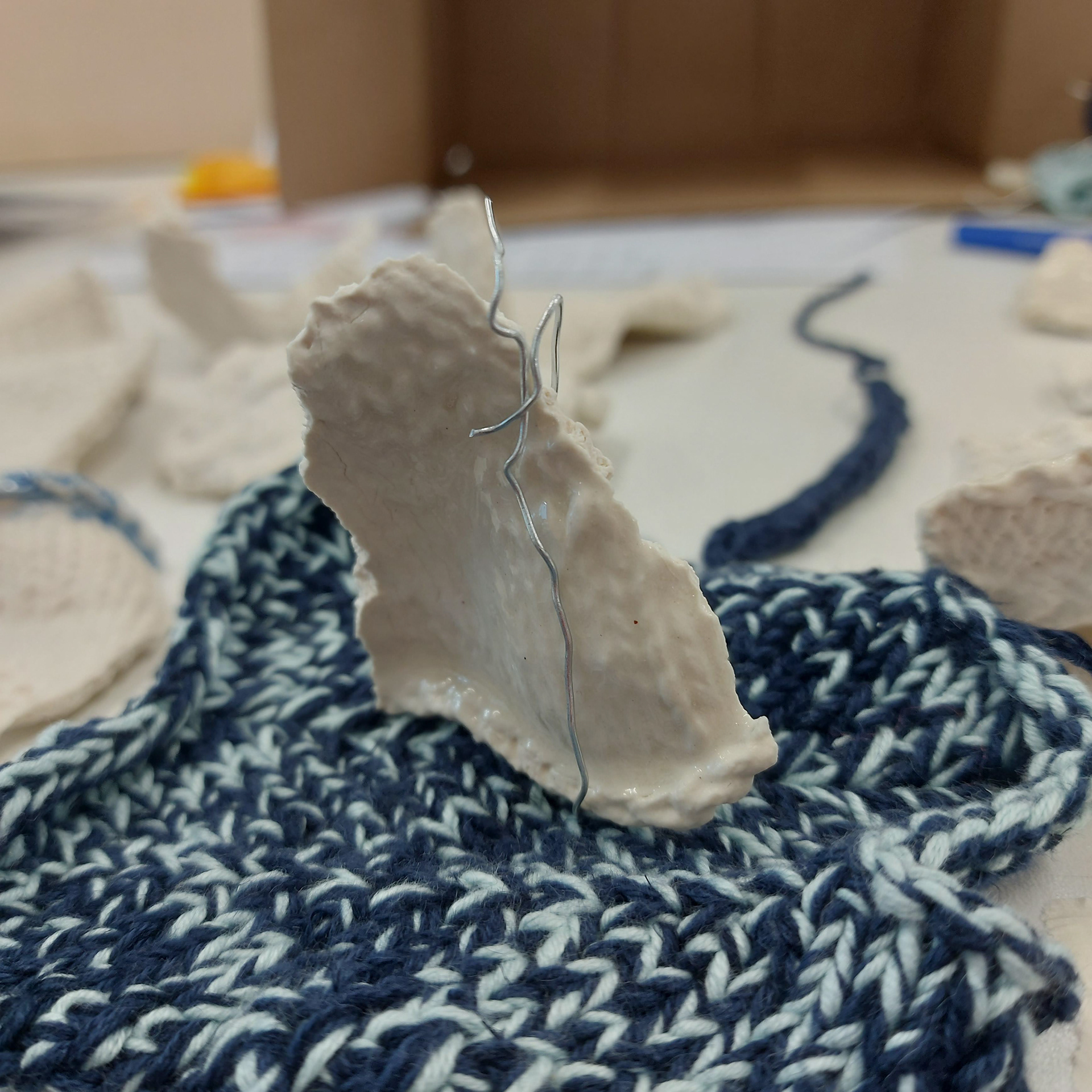

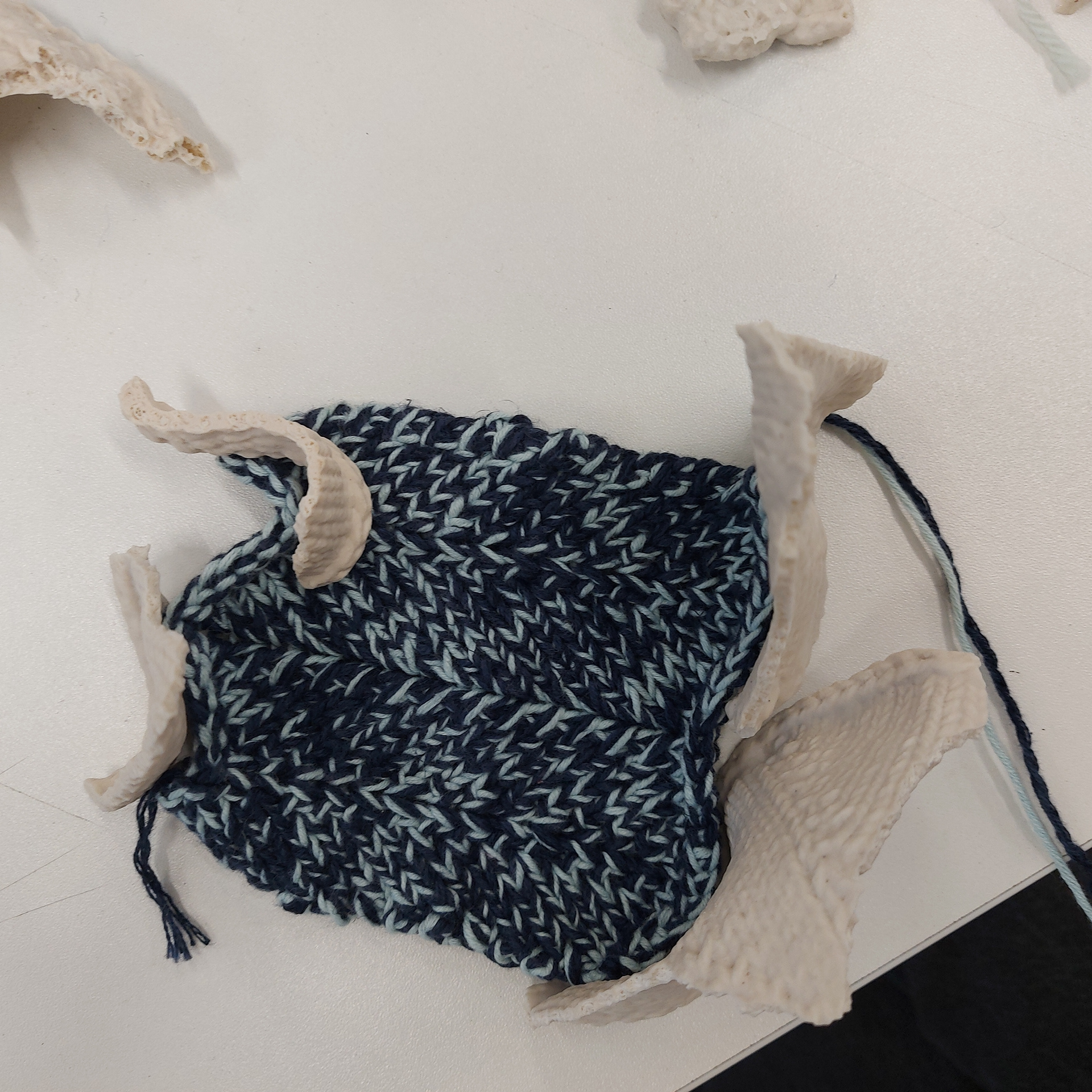
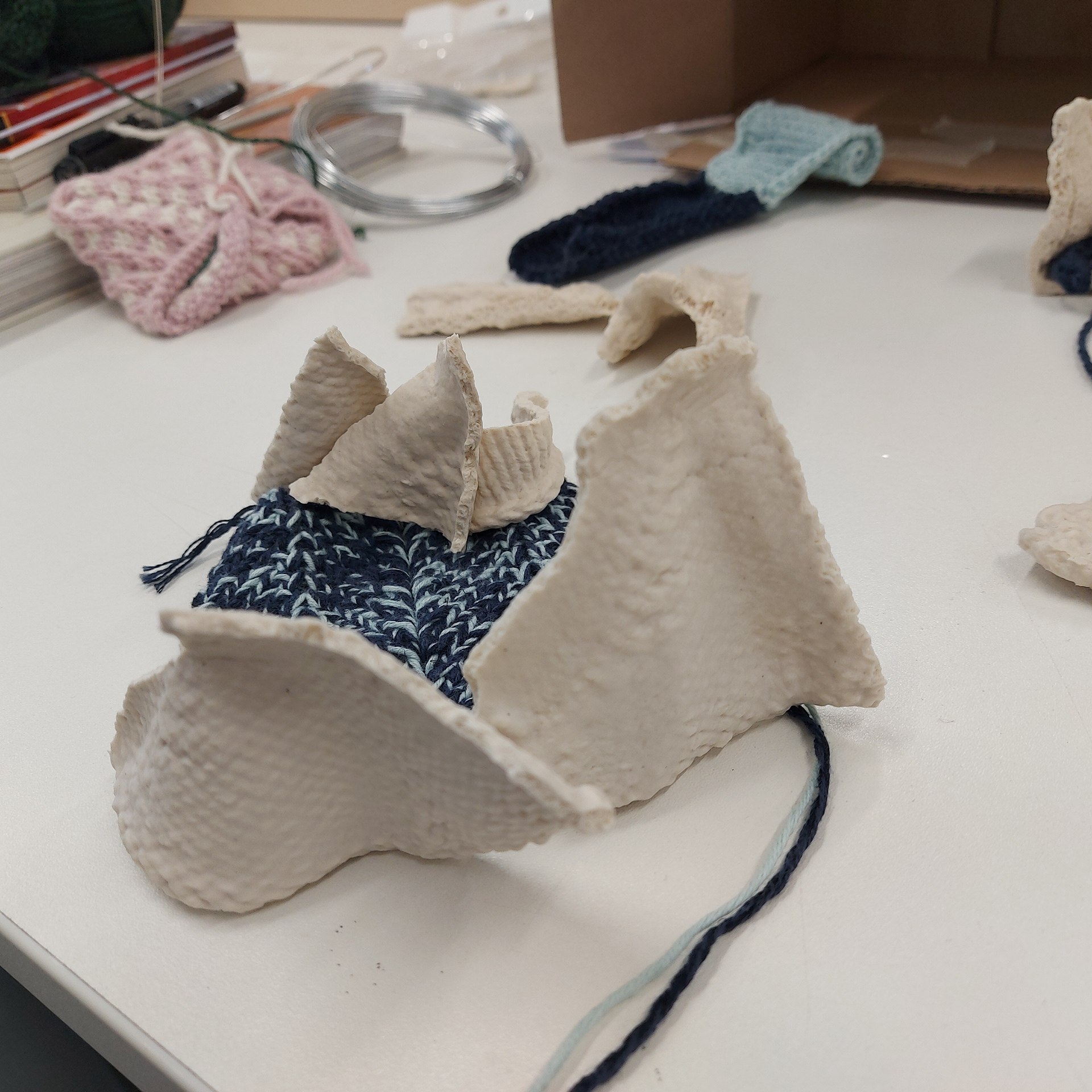
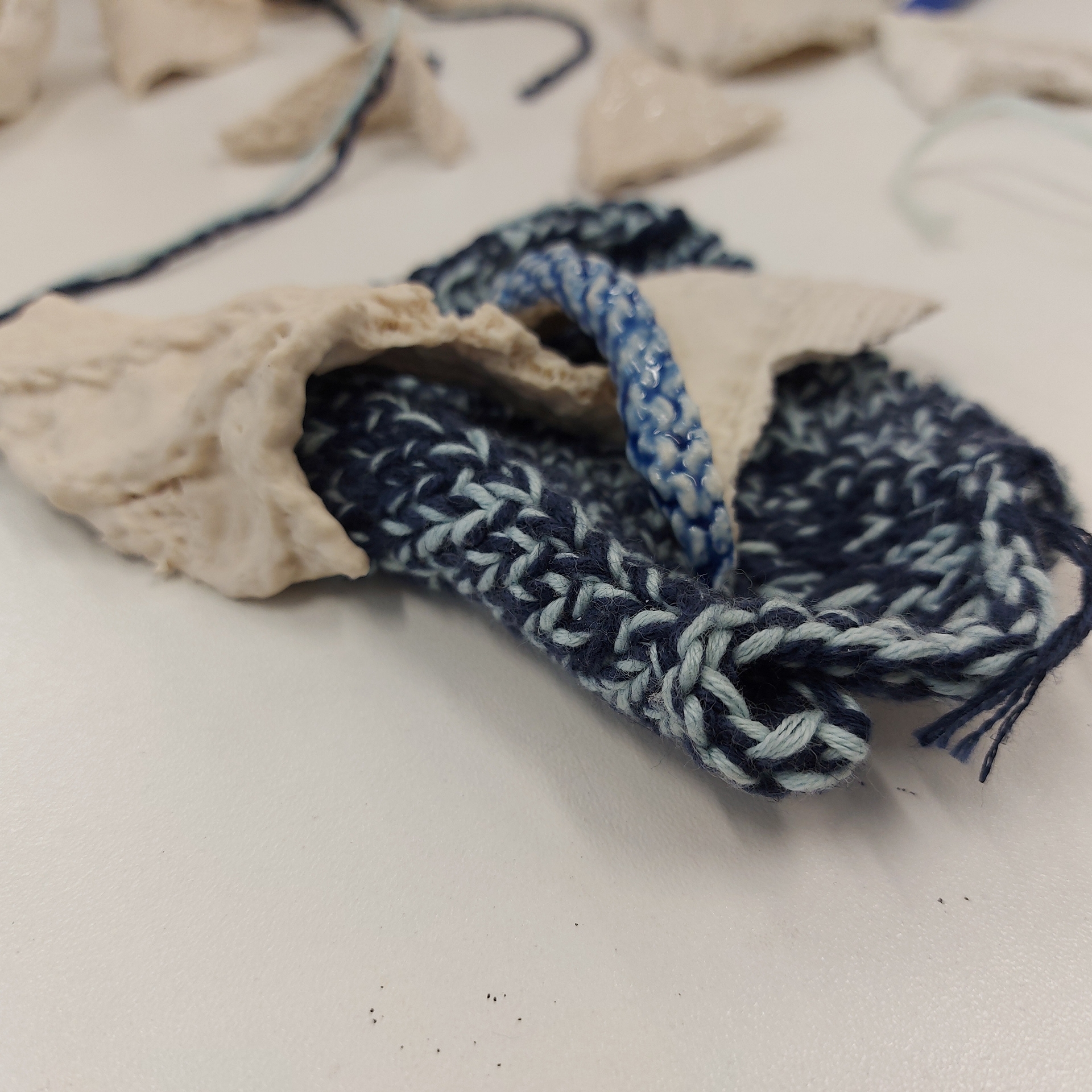
This knitted sample of the chevron lace stitch was thick as it incorporates two yarns. The size and the thickness made it easier to attach more ceramic pieces to it and I liked using it to hang pieces as the pieces liked nestling in the, with the wire.
The videos above show two different ways I moved the yarn with the ceramic pieces attached with wire. I found quickly that wire was the best connector to use when moving the pieces as they held the ceramic and knitting together without much movement. The wire was also able to poke through the holes within the stitches easily which meant I had more flexibility over where I was able to attach the ceramic on the knitting. The glue dots and masking tape were not as effective when it came to textile.
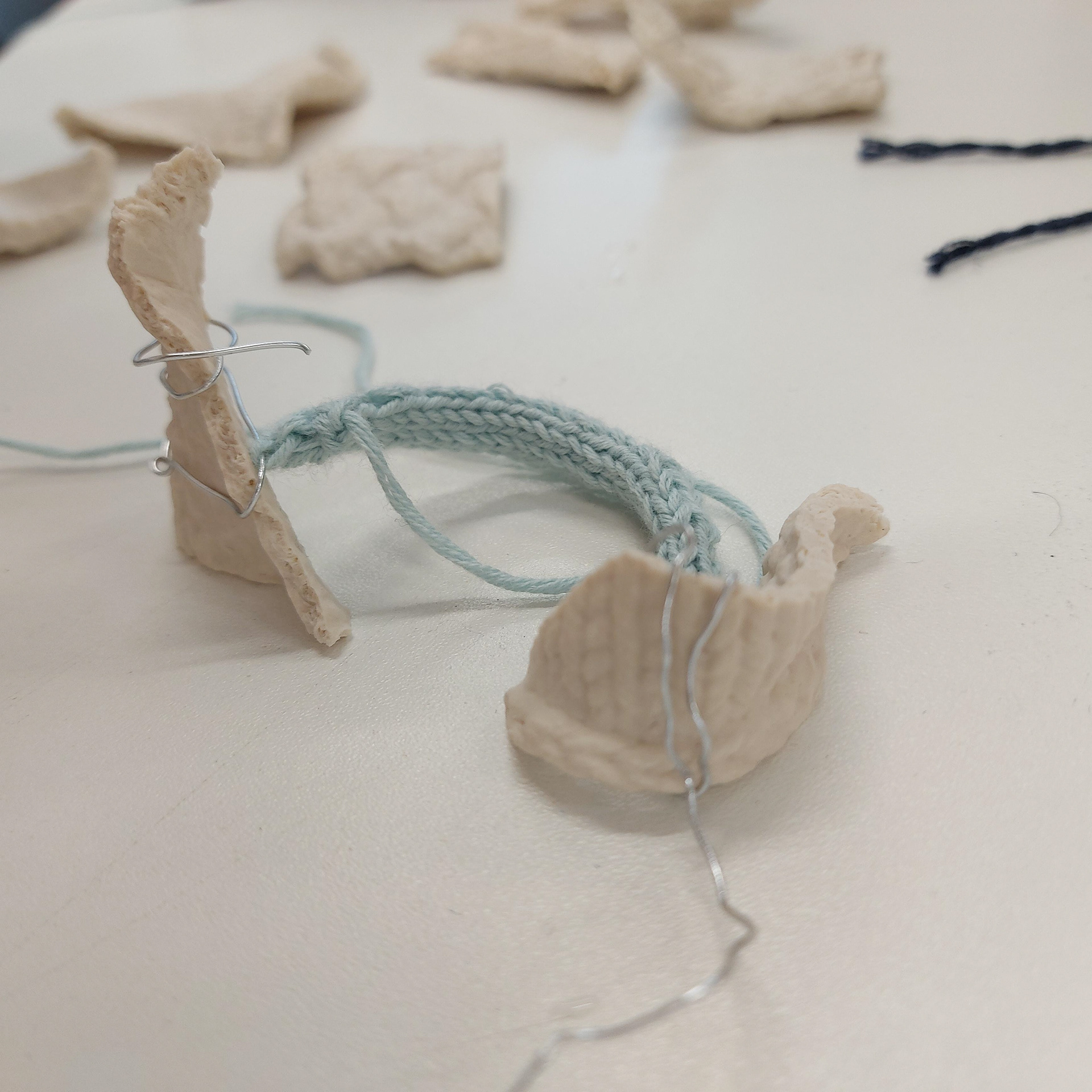


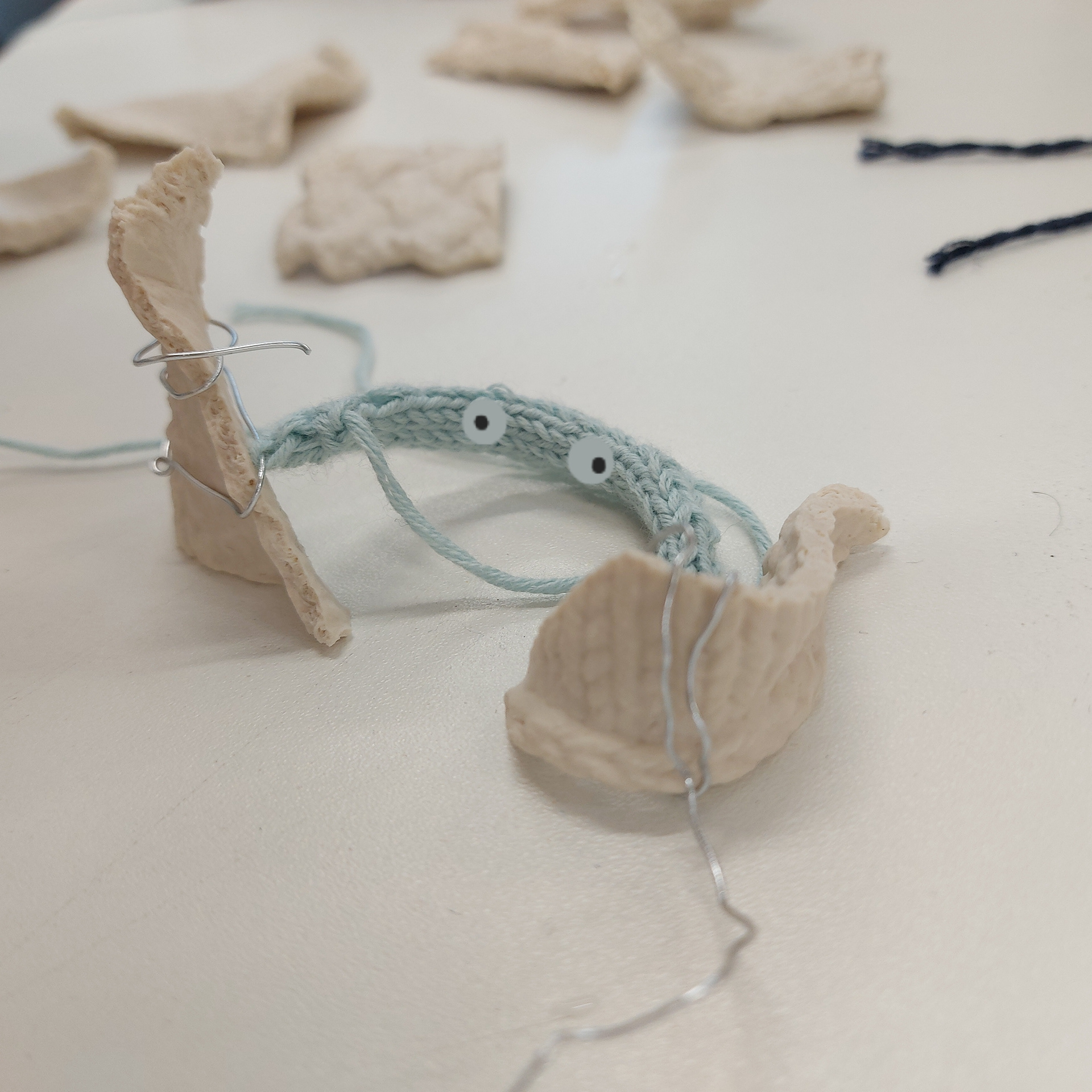

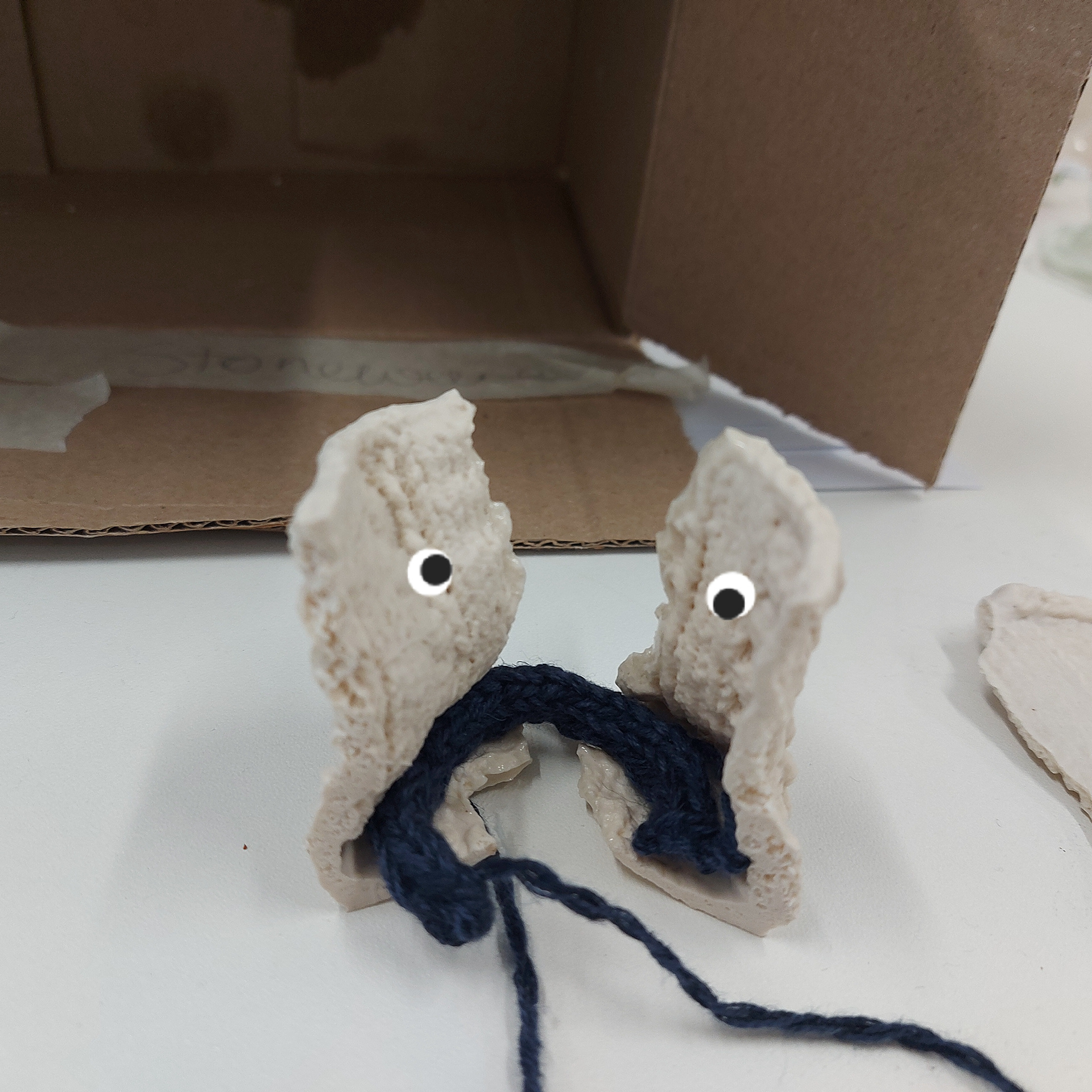
I found that the more I experimented with the ceramic and knitted material together, I started seeing more life like features in some of the shapes was making and started using my phone to put eyes on them to see what they would look like if I turned them into creatures.


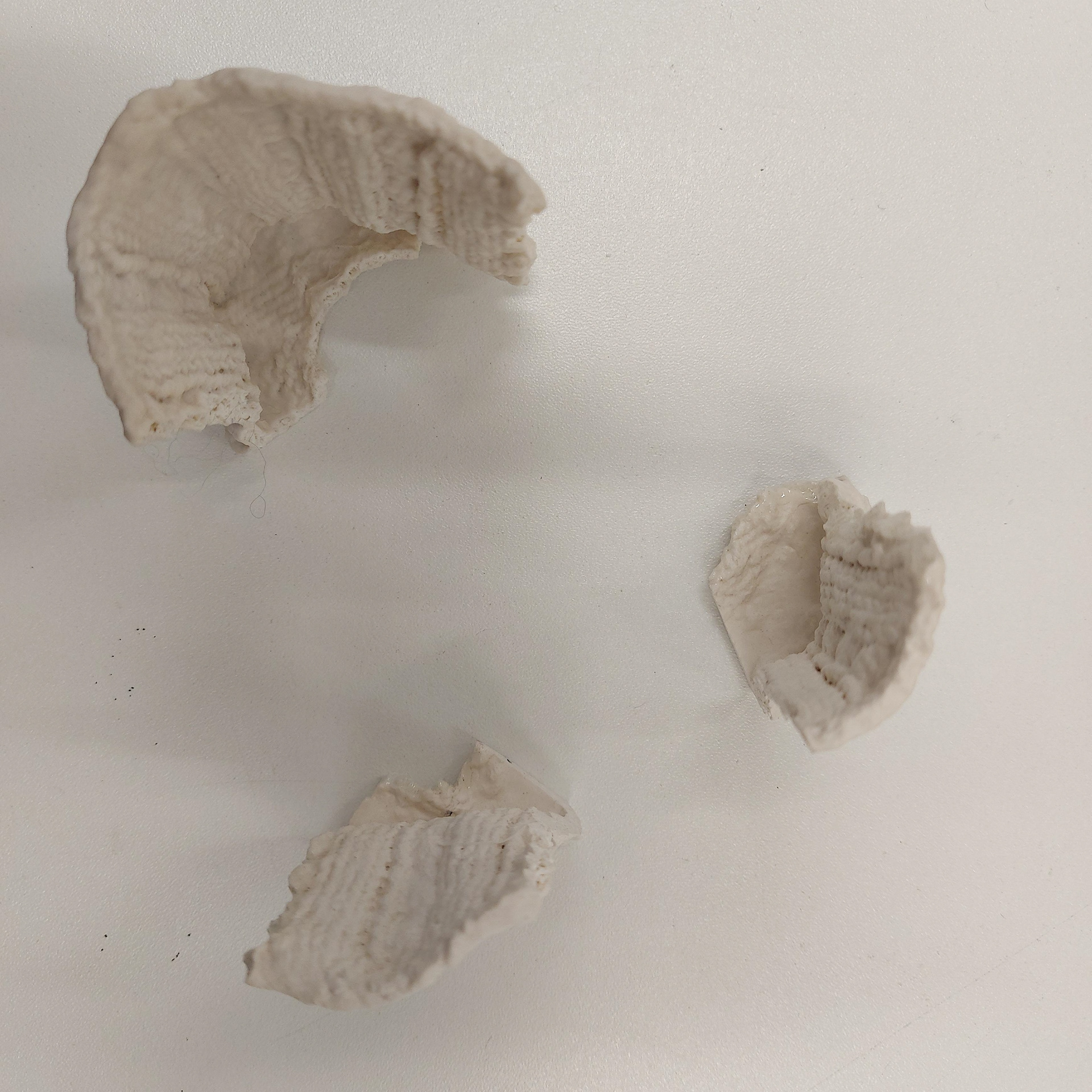

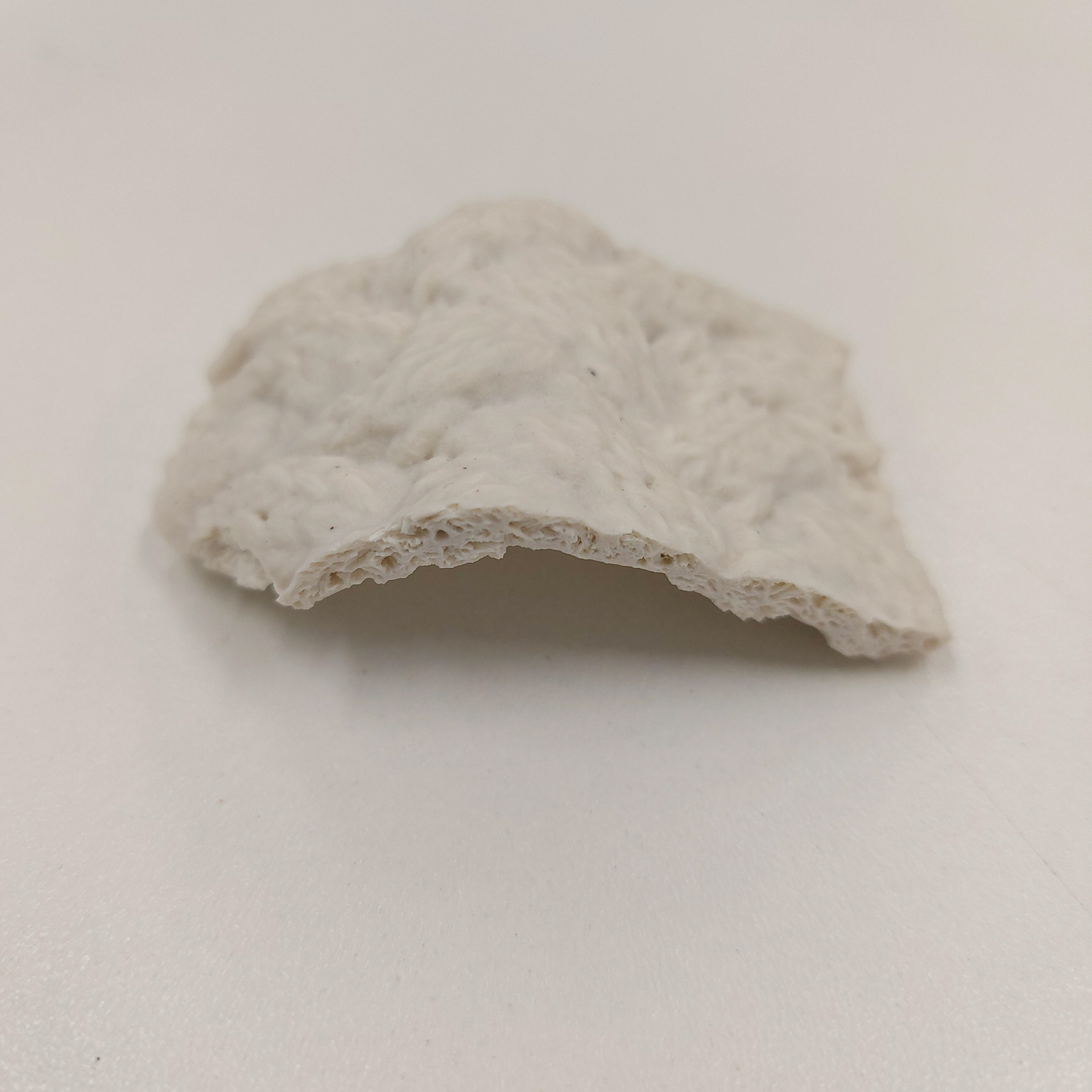


These are pieces that I was able to get cut on the glass cutter after being fired to earthenware and stoneware. This meant that I was able to see the cross section more clearly of the pieces that I had broken. I was able to see it especially clearly on the basketweave stitch piece that was thicker due to the continuous use of cabling which means the stitches were often folded over.


During the first week of experimentation I also cast a couple more pieces that I had been knitting during that week. The first pieces with the holes I used to see if I could incorporate knitted work into these holes through knots or casting on my knitting through the holes. I also cast the basket weave stitch again but in two different yarns. The piece starts in DK weight yarn and then I switch to 4 ply, which is a lighter yarn, I then finished the piece off again in DK weight yarn to see if the shift between the two yarns was obvious within the intersections. I could already tell that the basket weave stitch will not look too good visually as the slip clumped together very quickly during the casting process and the effect looks more like it was brushed on top instead of the smoothness of the ceramic slip.
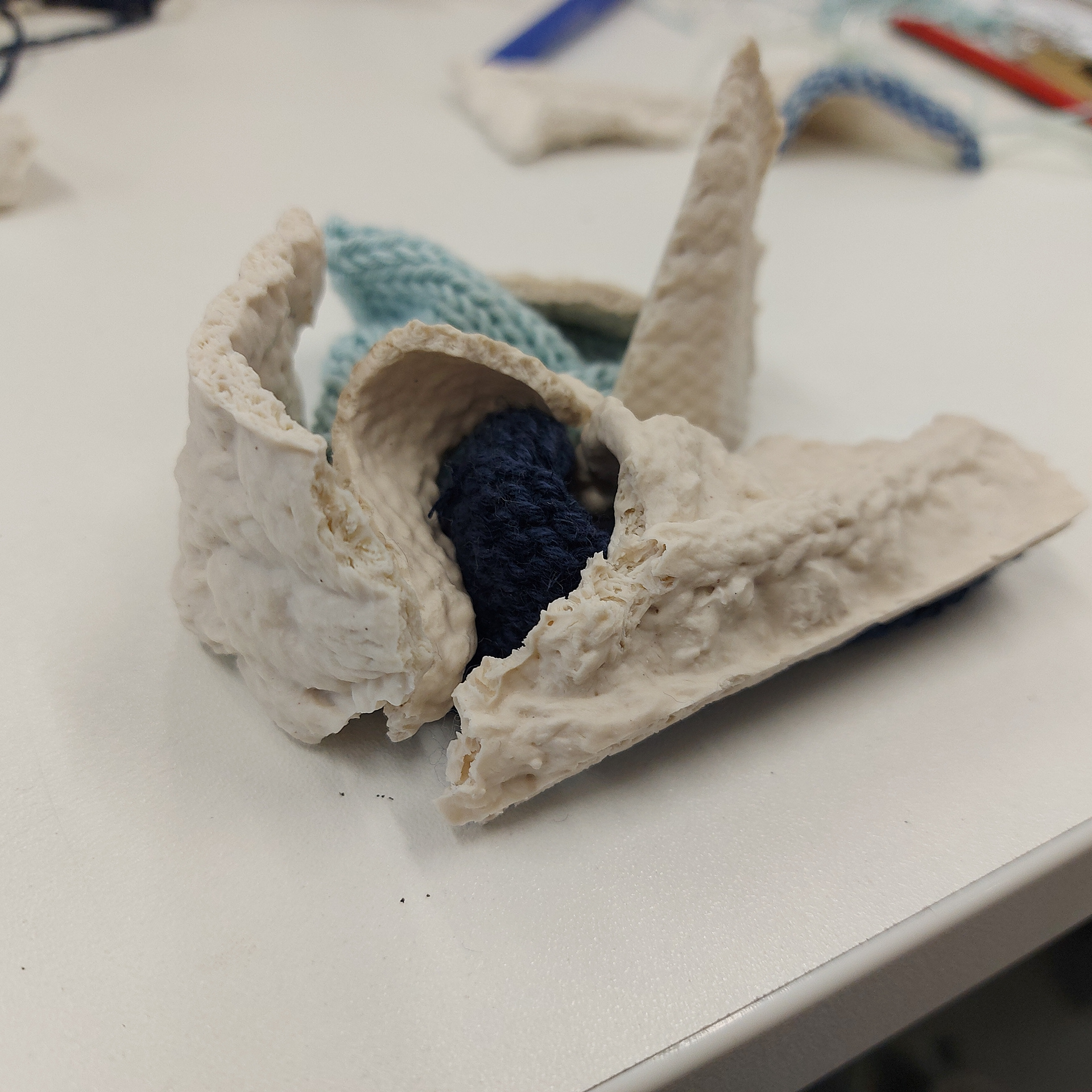
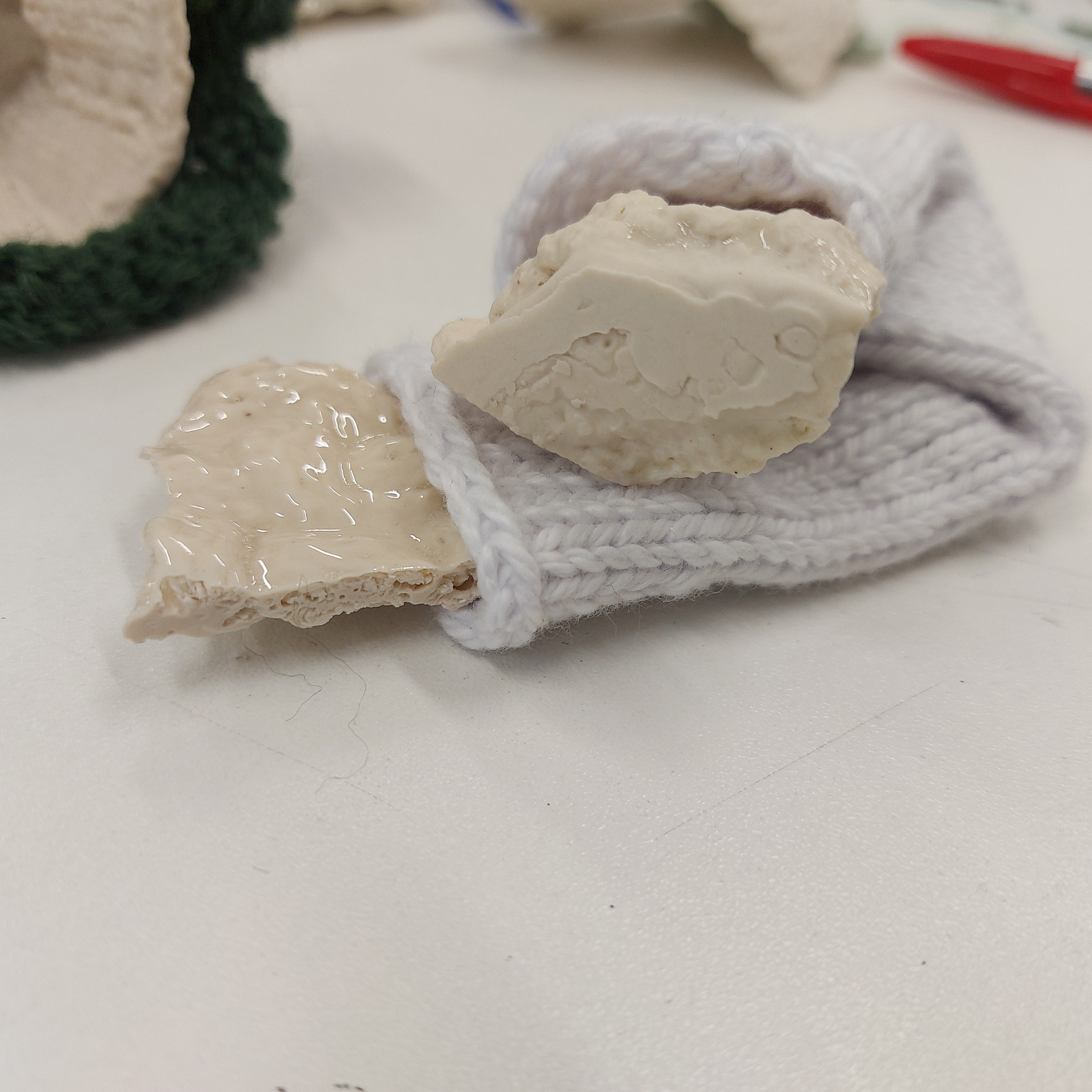
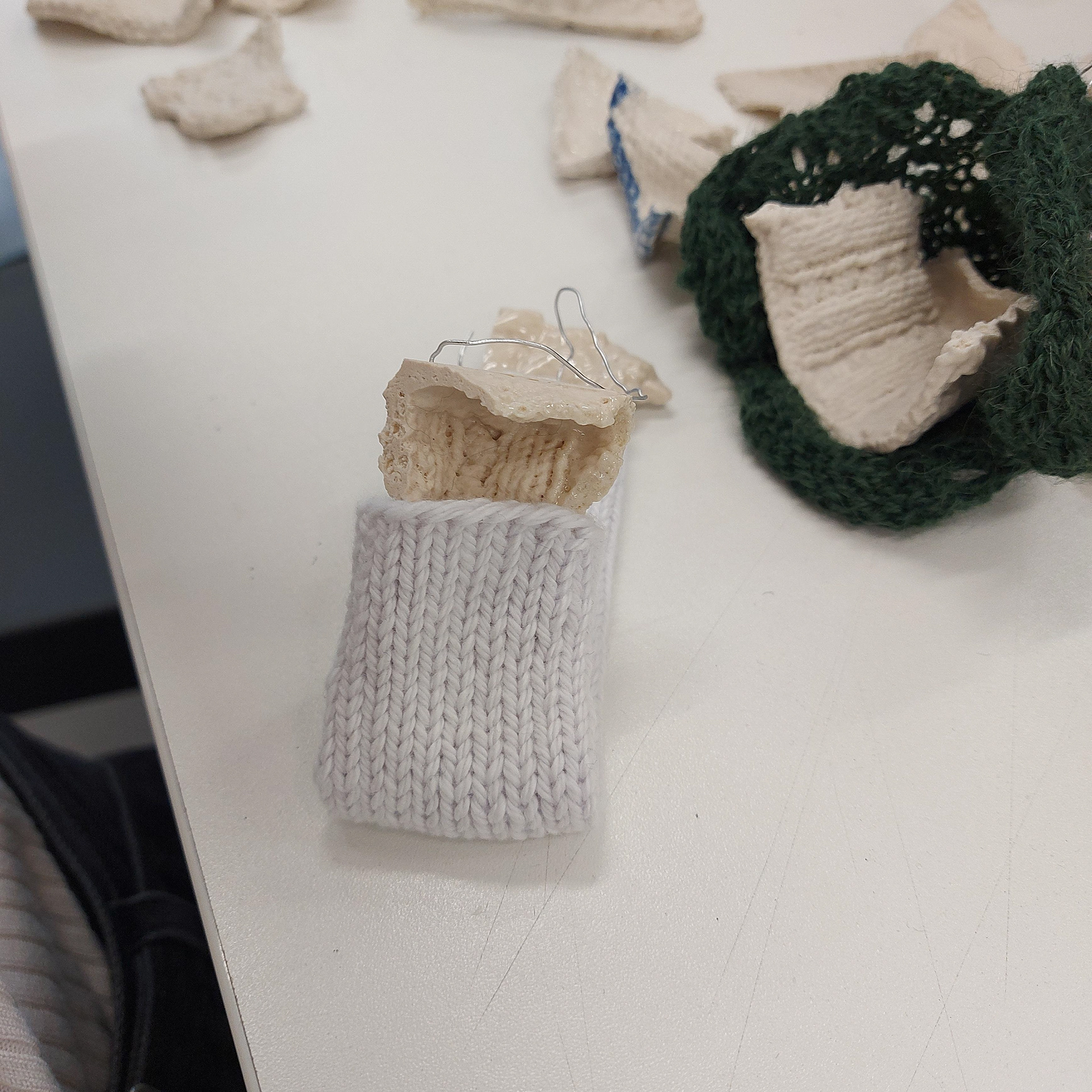
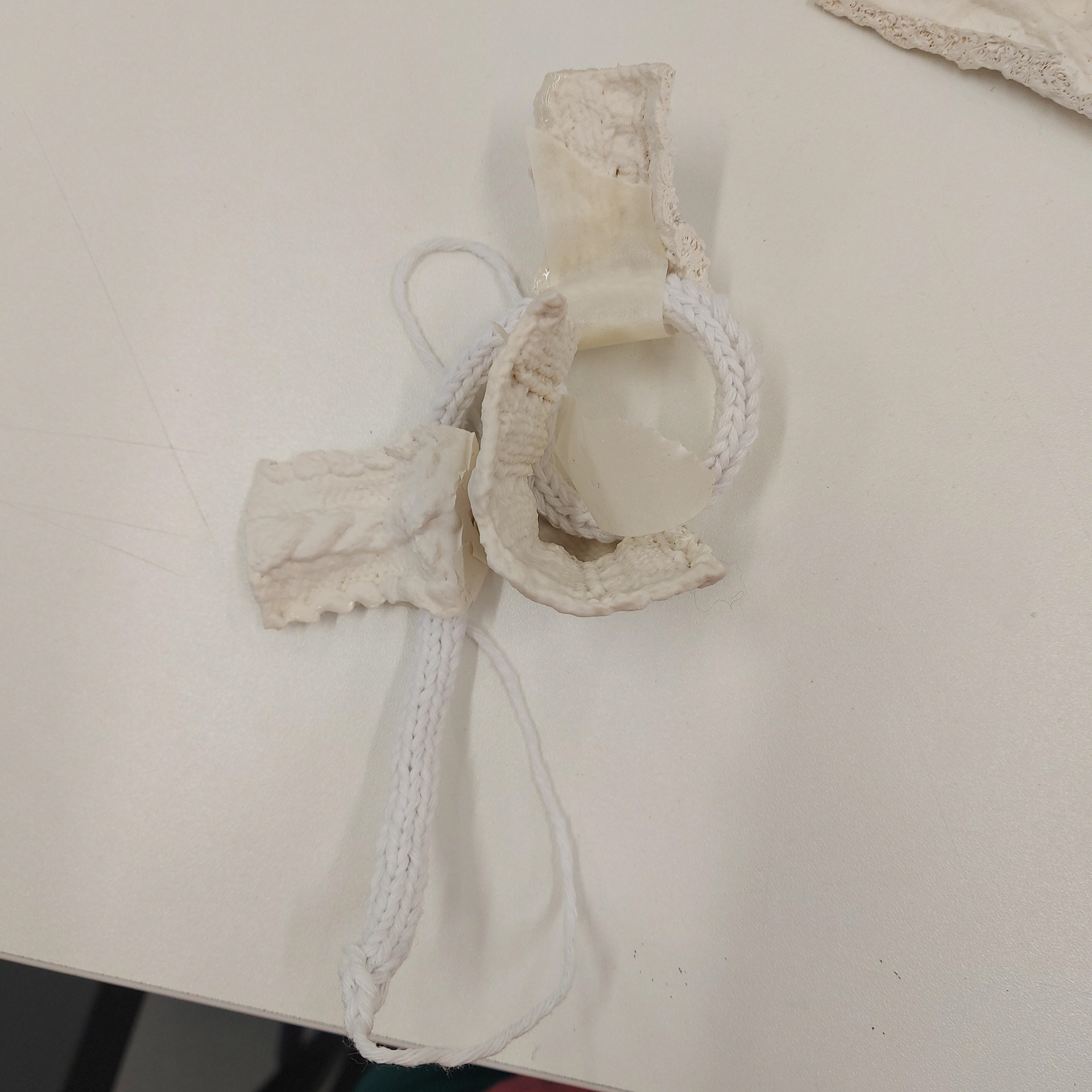
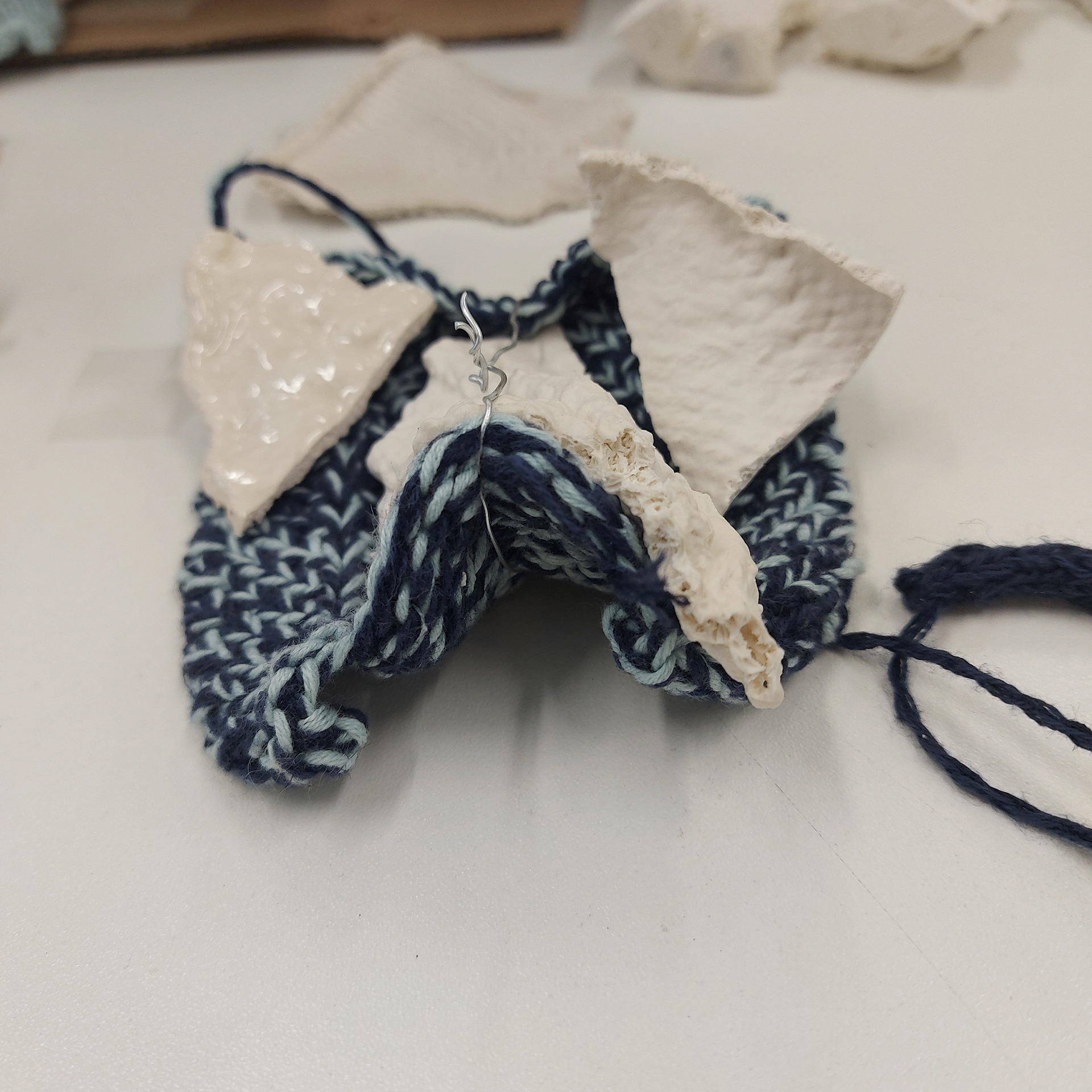
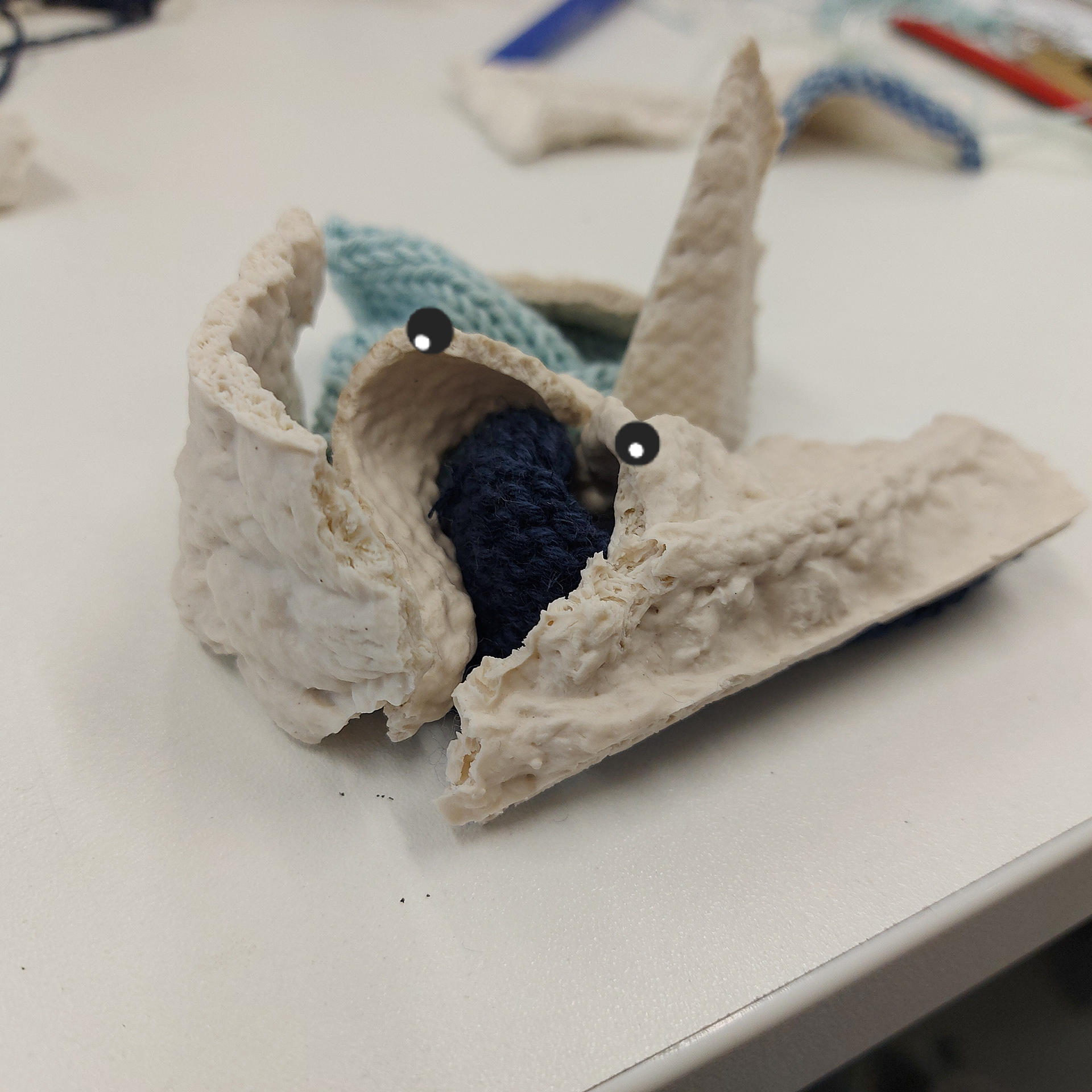

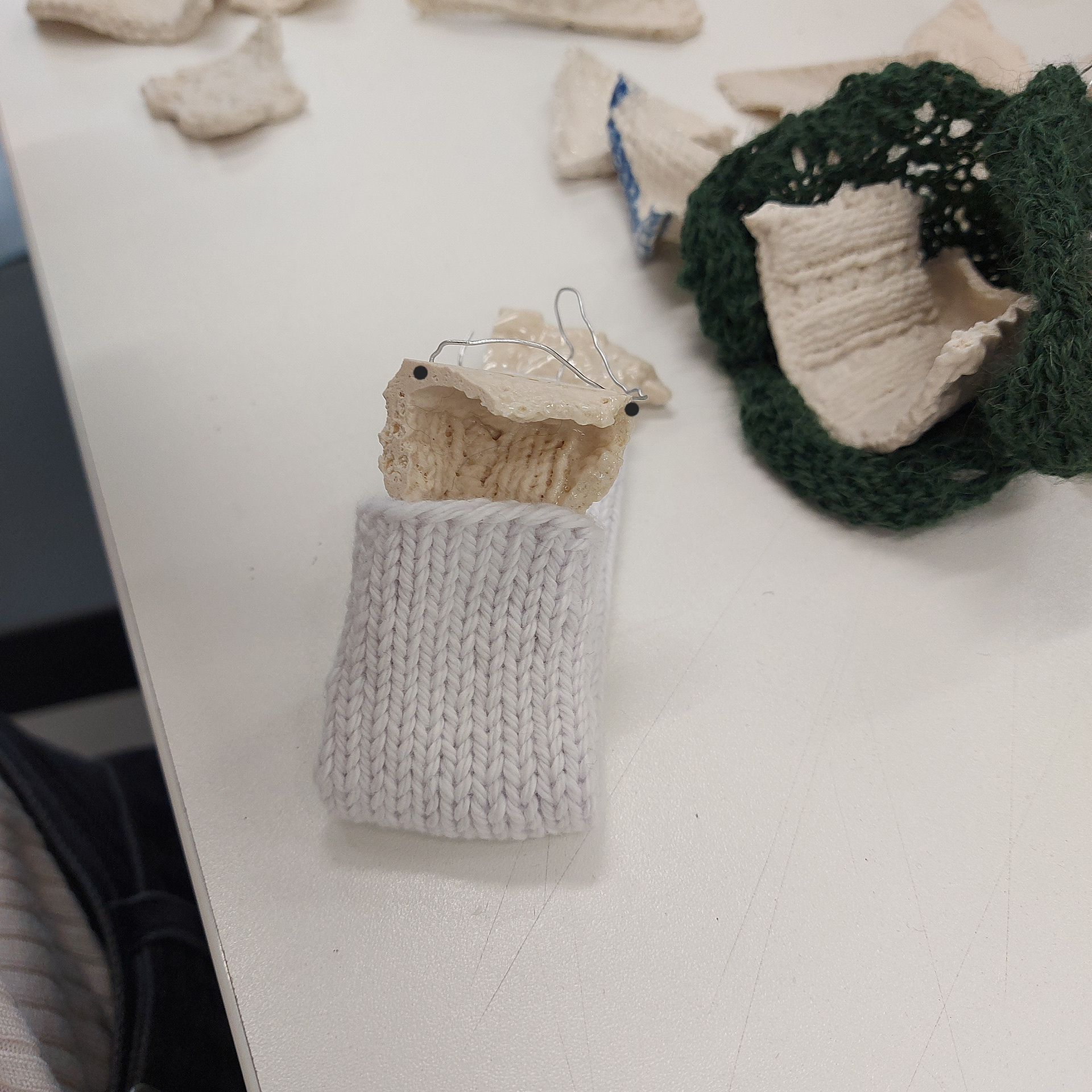
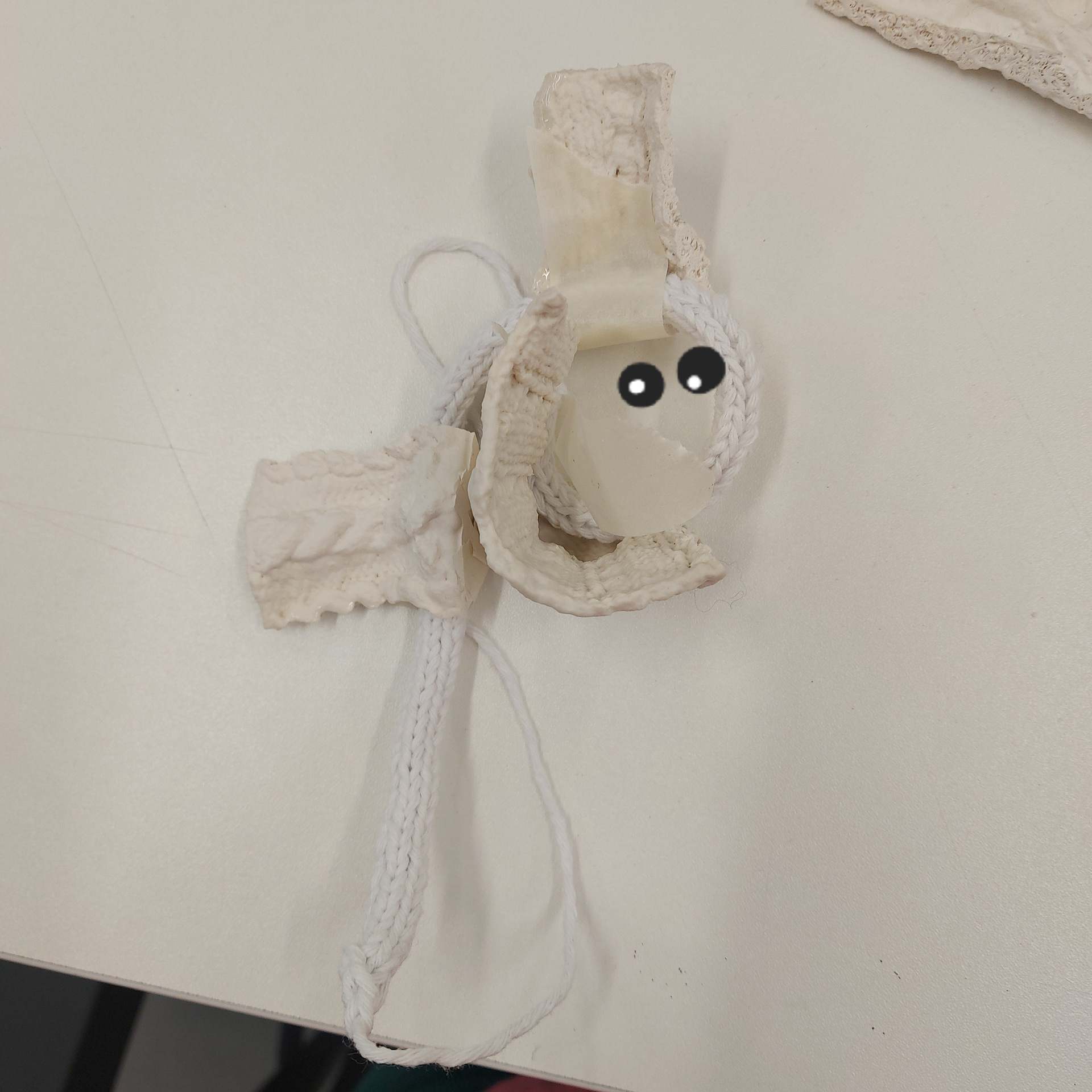
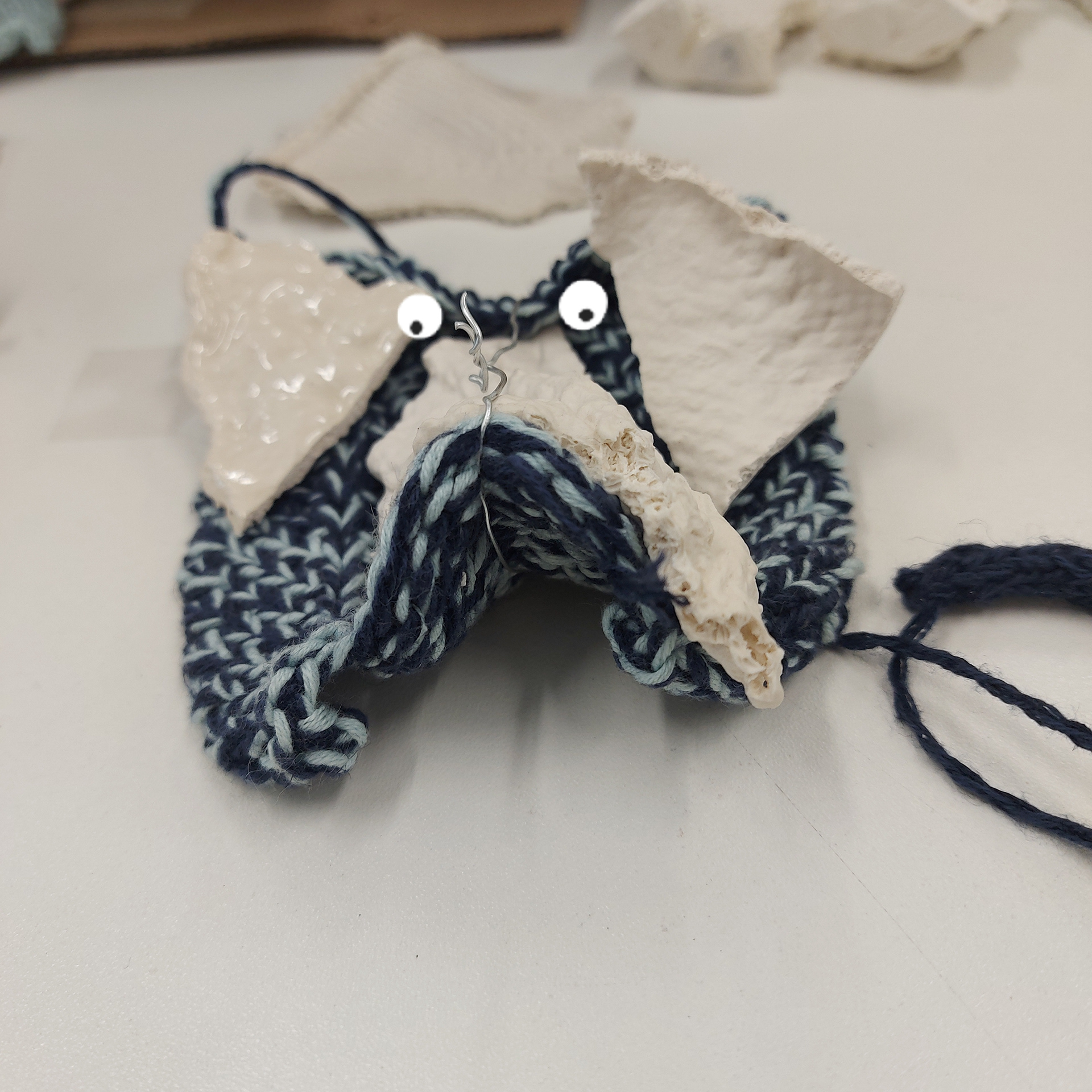
This is my continuous use of putting faces on the samples that I made. I liked how I was able to see faces and sometimes more animal like qualities in each one. The pieces that I made faces out of were normally sat on a flat surface or had a more upright stance if wire was involved. Putting faces on these pieces allowed me to explore a possible context for the samples I was making.
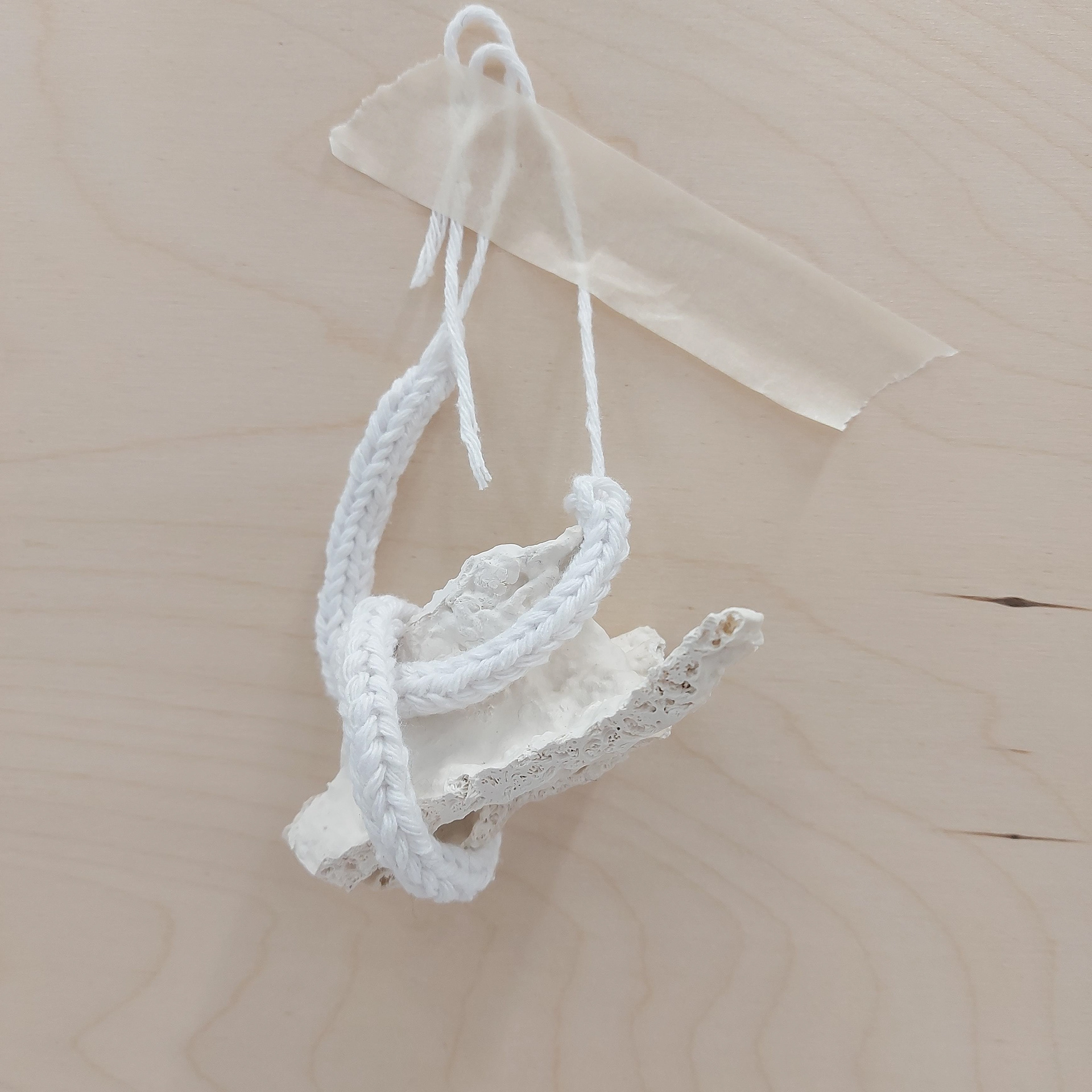
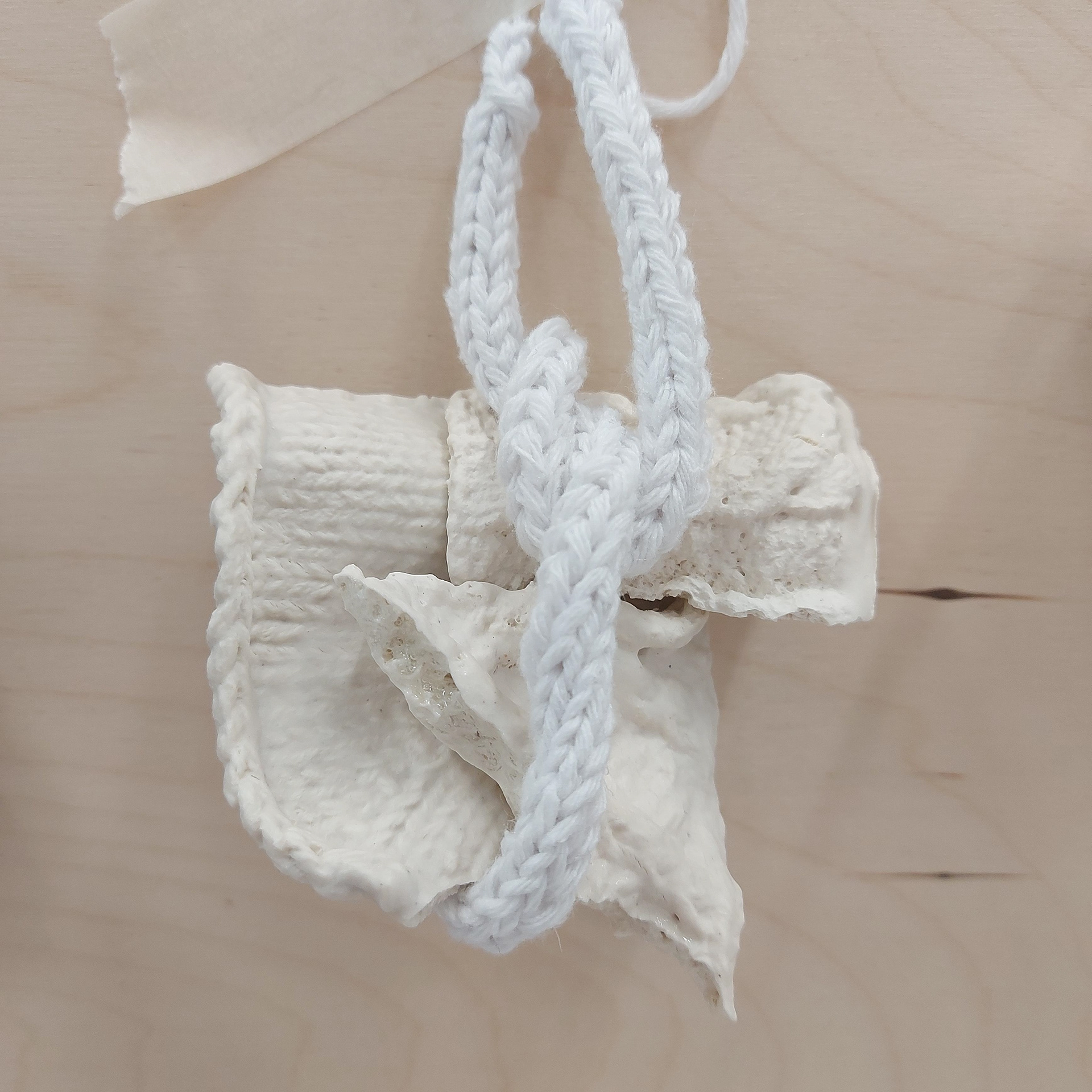
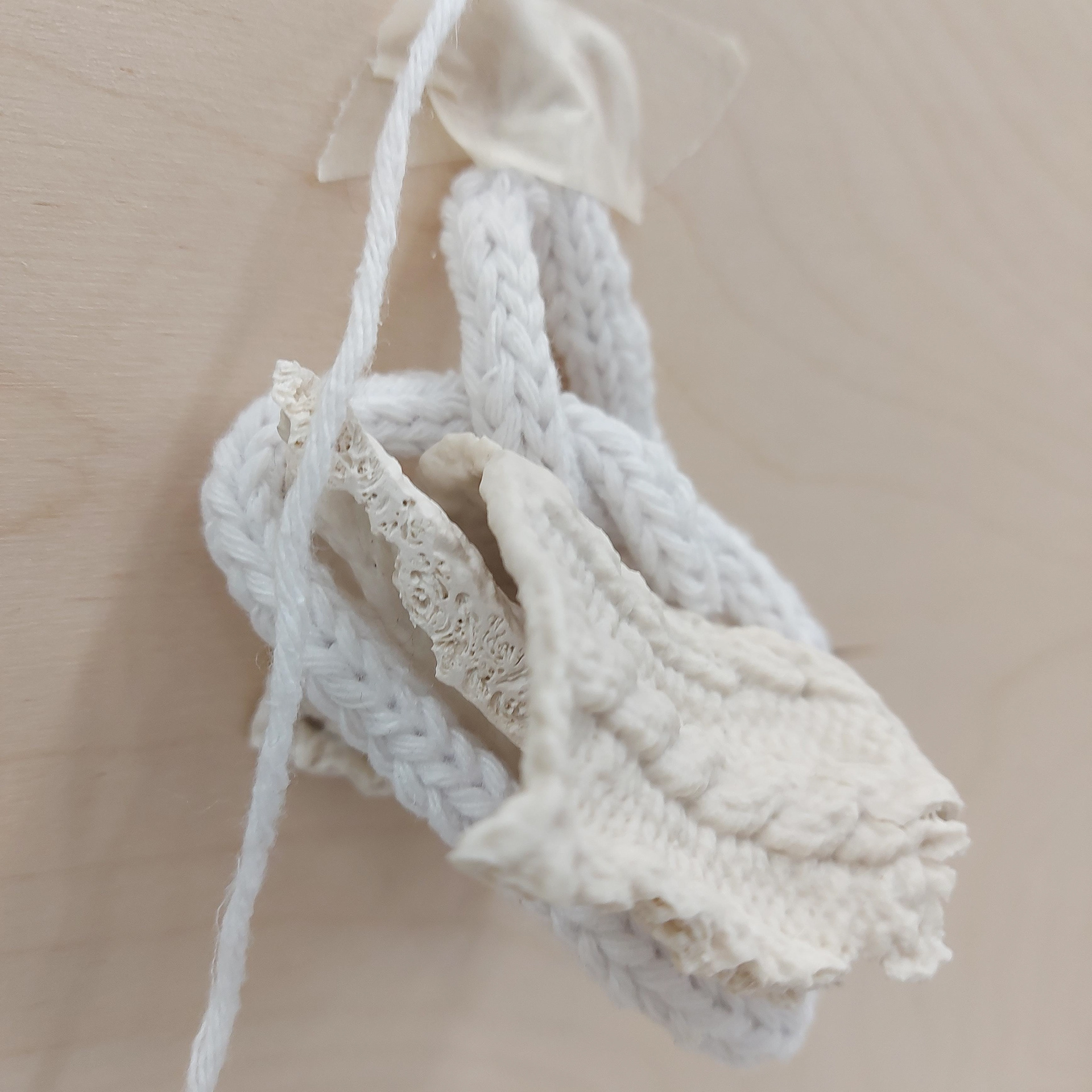
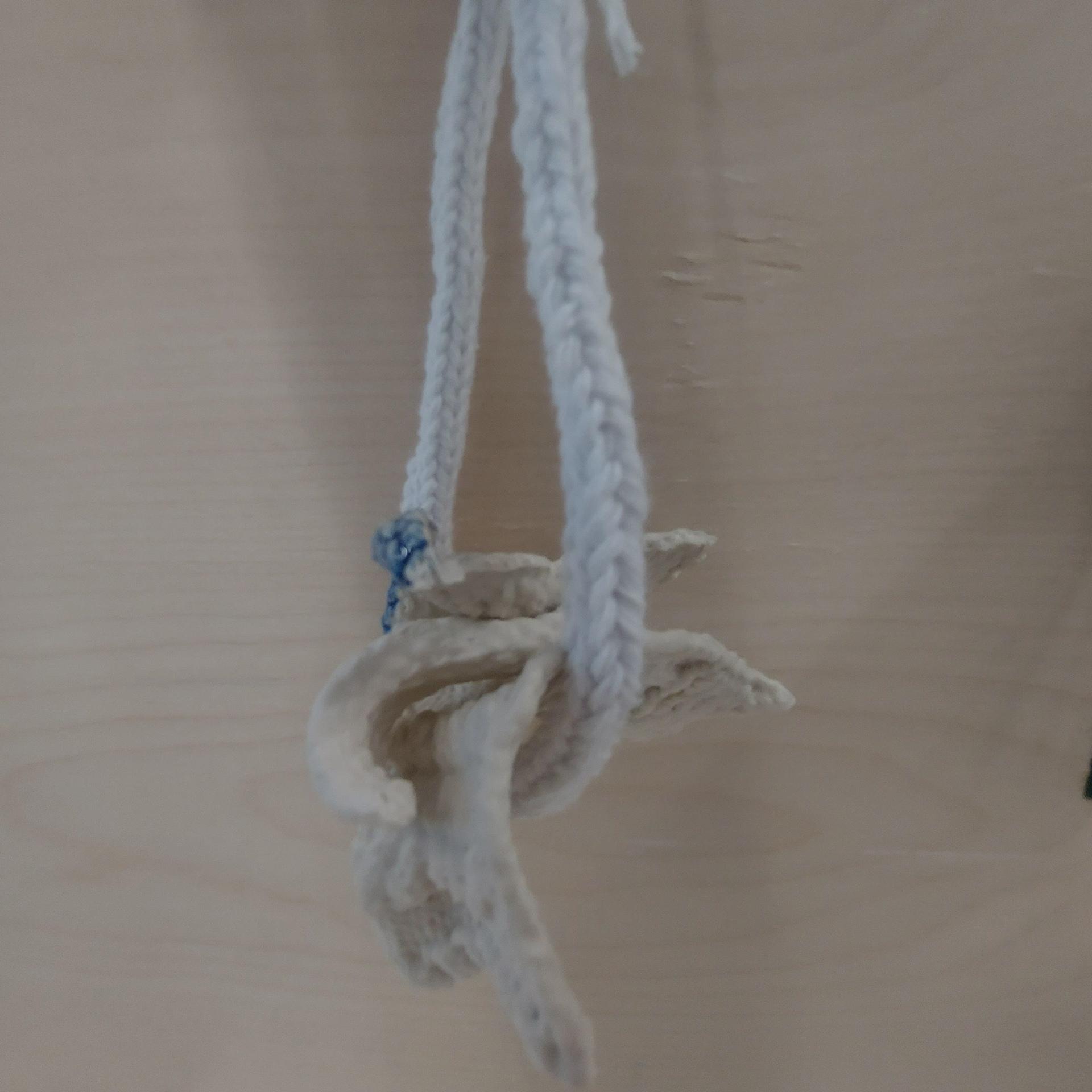
This was the longest i-cord that I knitted so far for the experimentation, being able to use it for knitting as well. I wasn't particularly happy with my i-cord samples before as they looked messy, however, using a thicker cotton yarn seems to look better due to it being a smoother fibre compared to what else I was using.

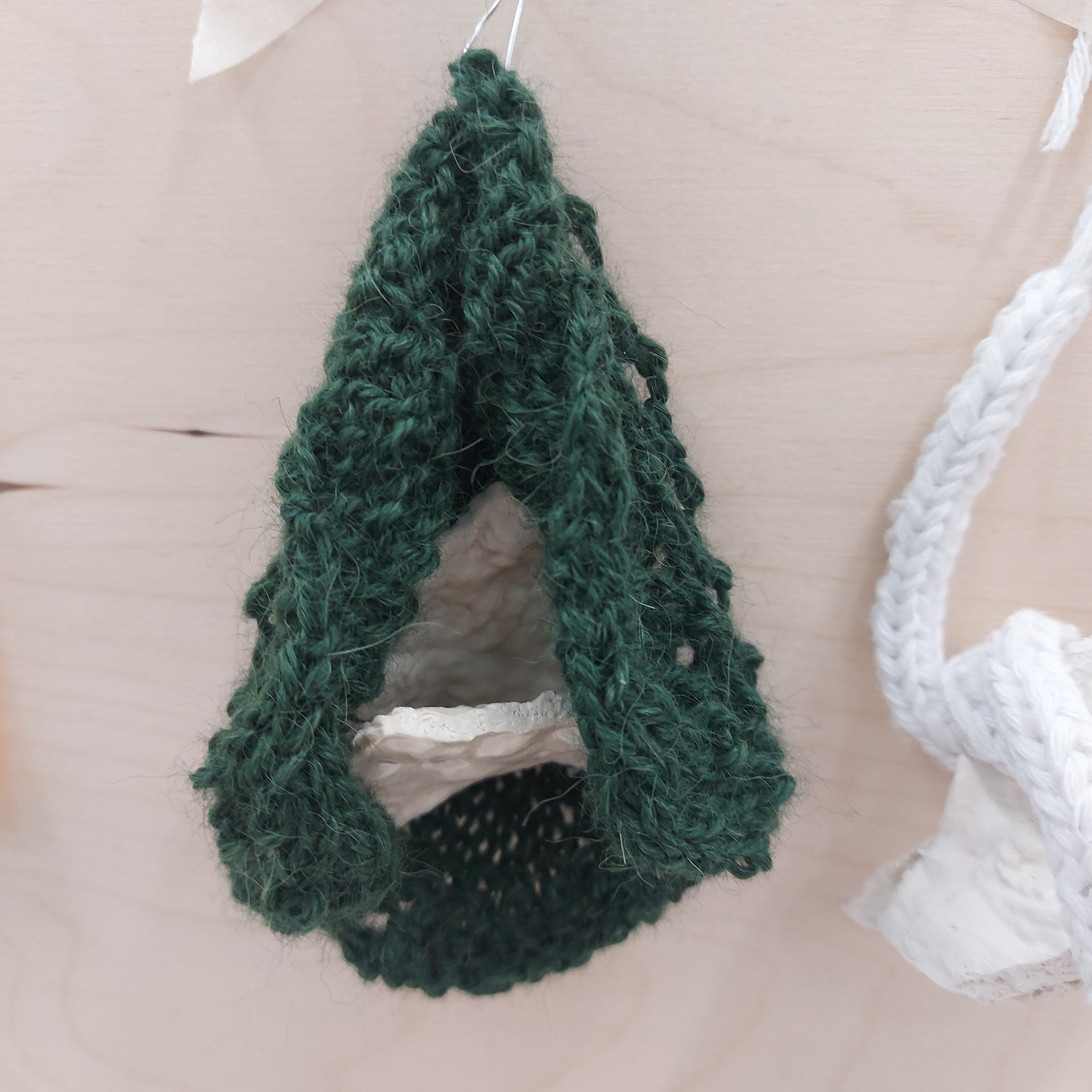
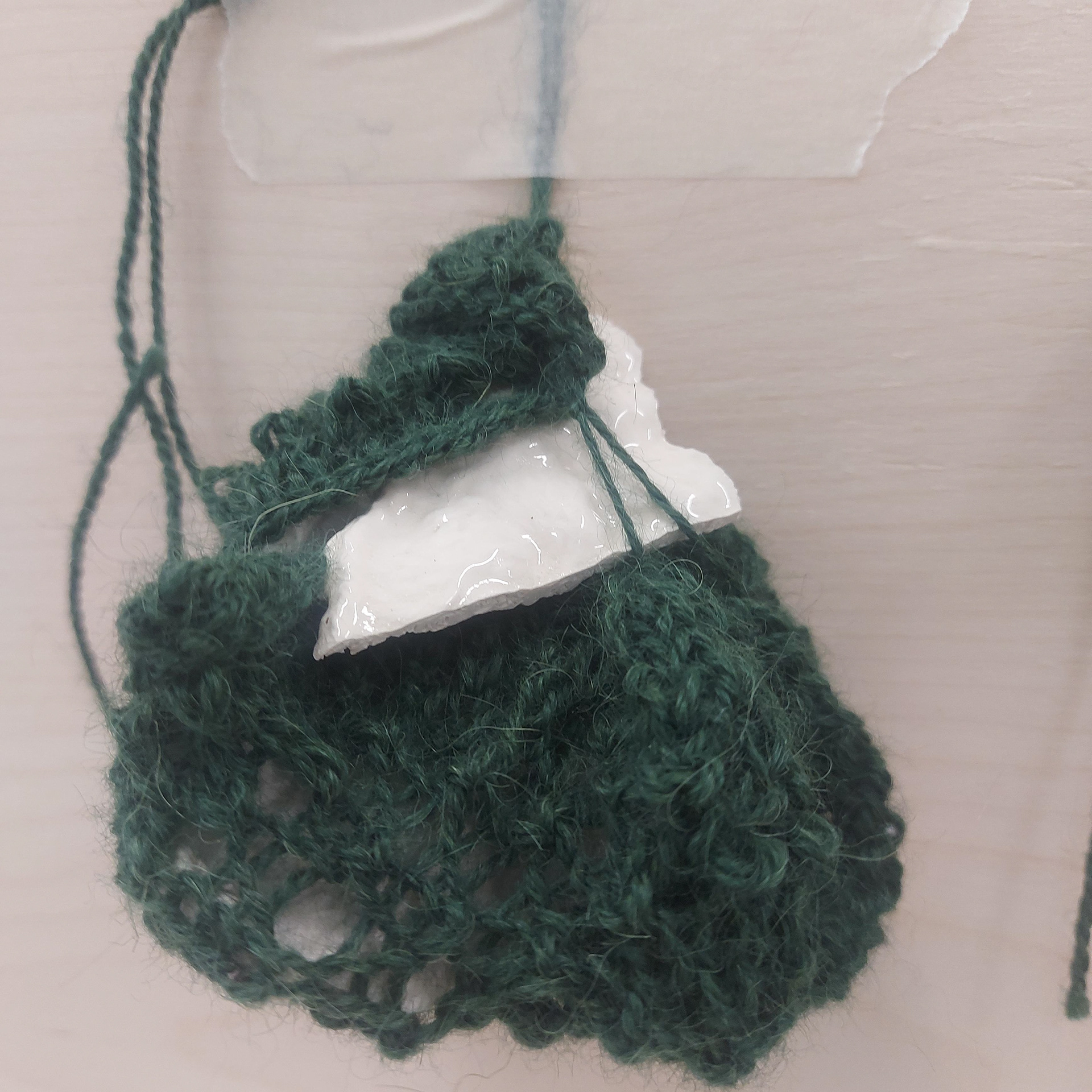
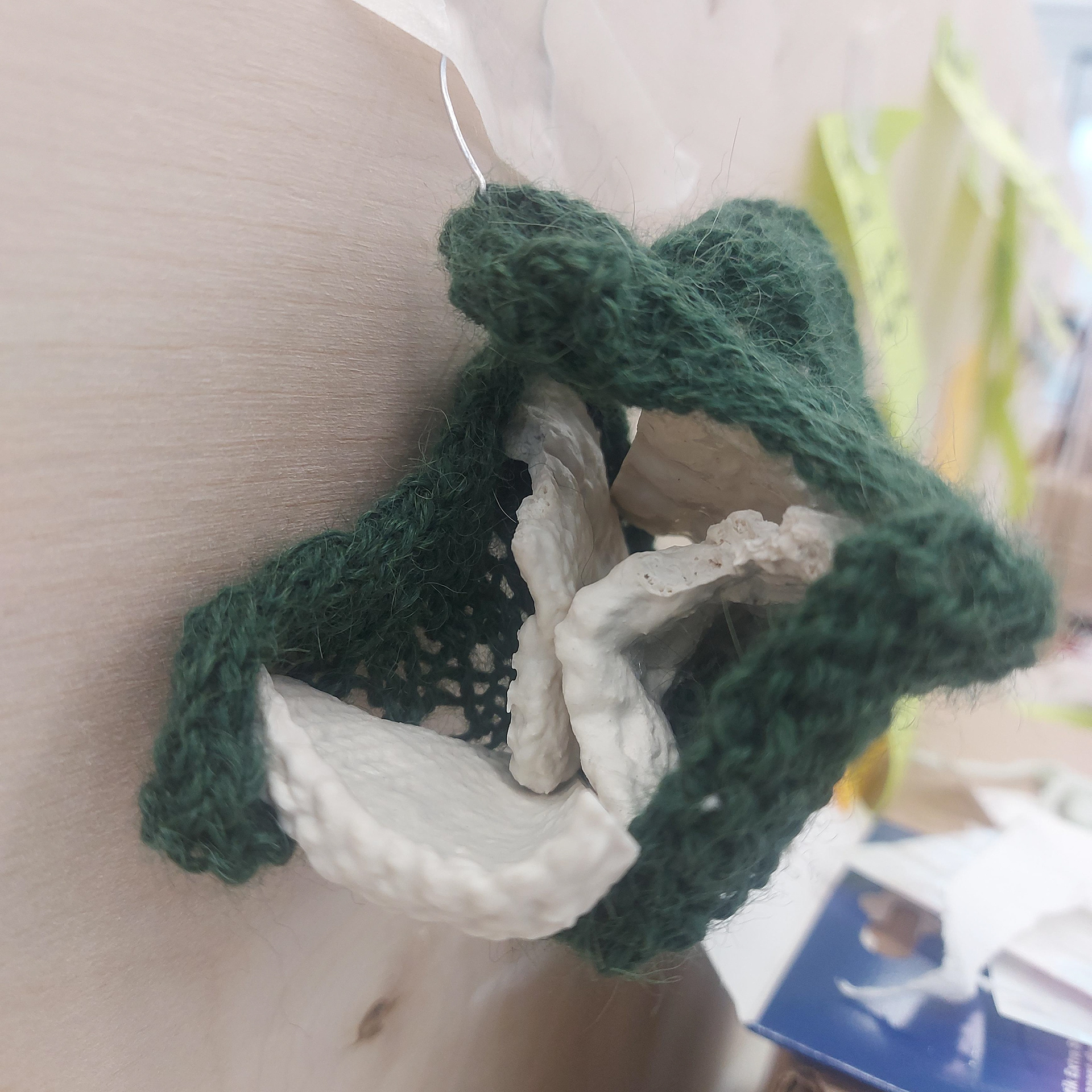

The feather and fan stitch was used to knit this sample using 100% alpaca. Due to the holes in the knitting pattern, some of the ceramic pieces were able to nest within these holes which I really liked. I did think that some of the samples reminded me of a cocoon or a chrysalis in the way that it held some of the ceramic pieces.

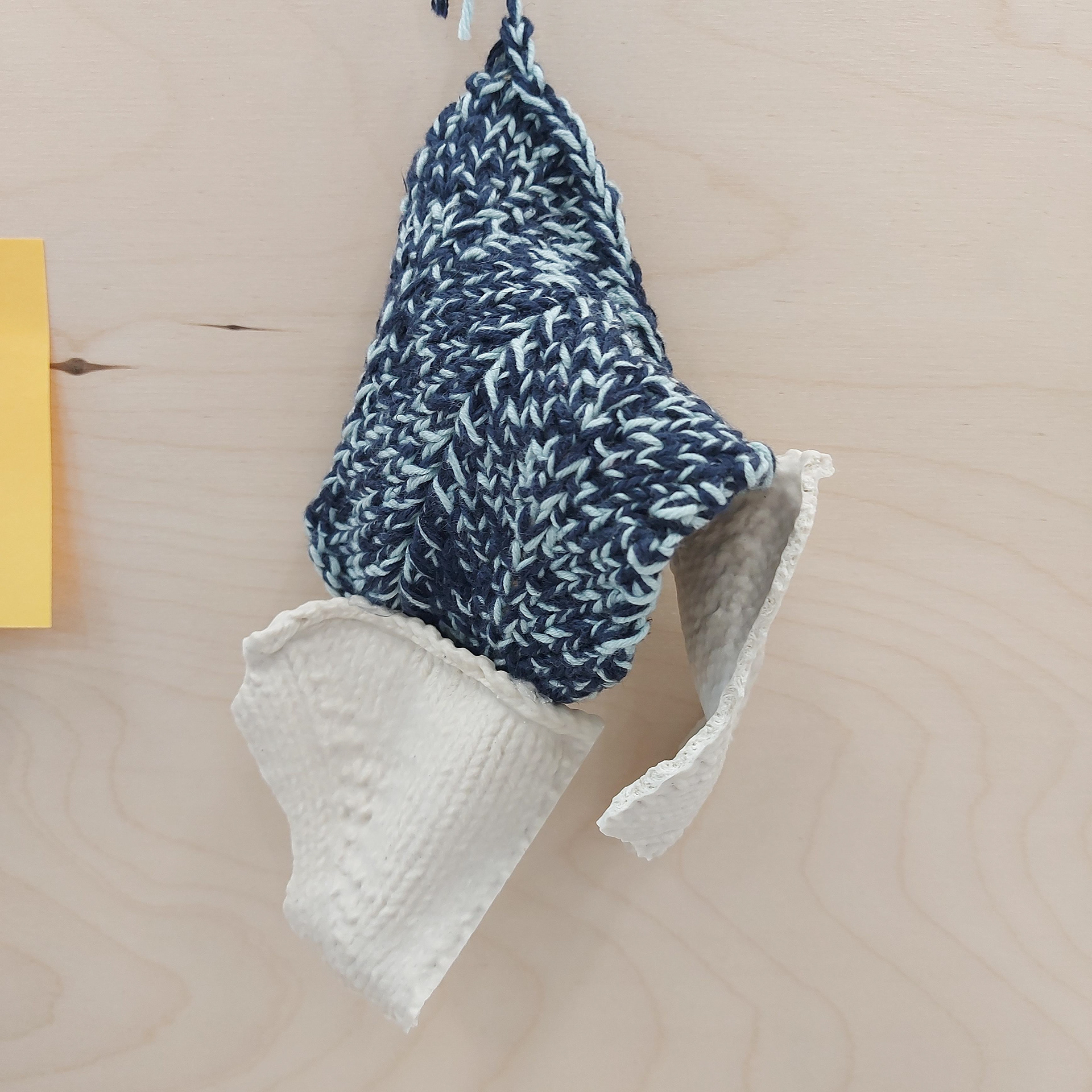

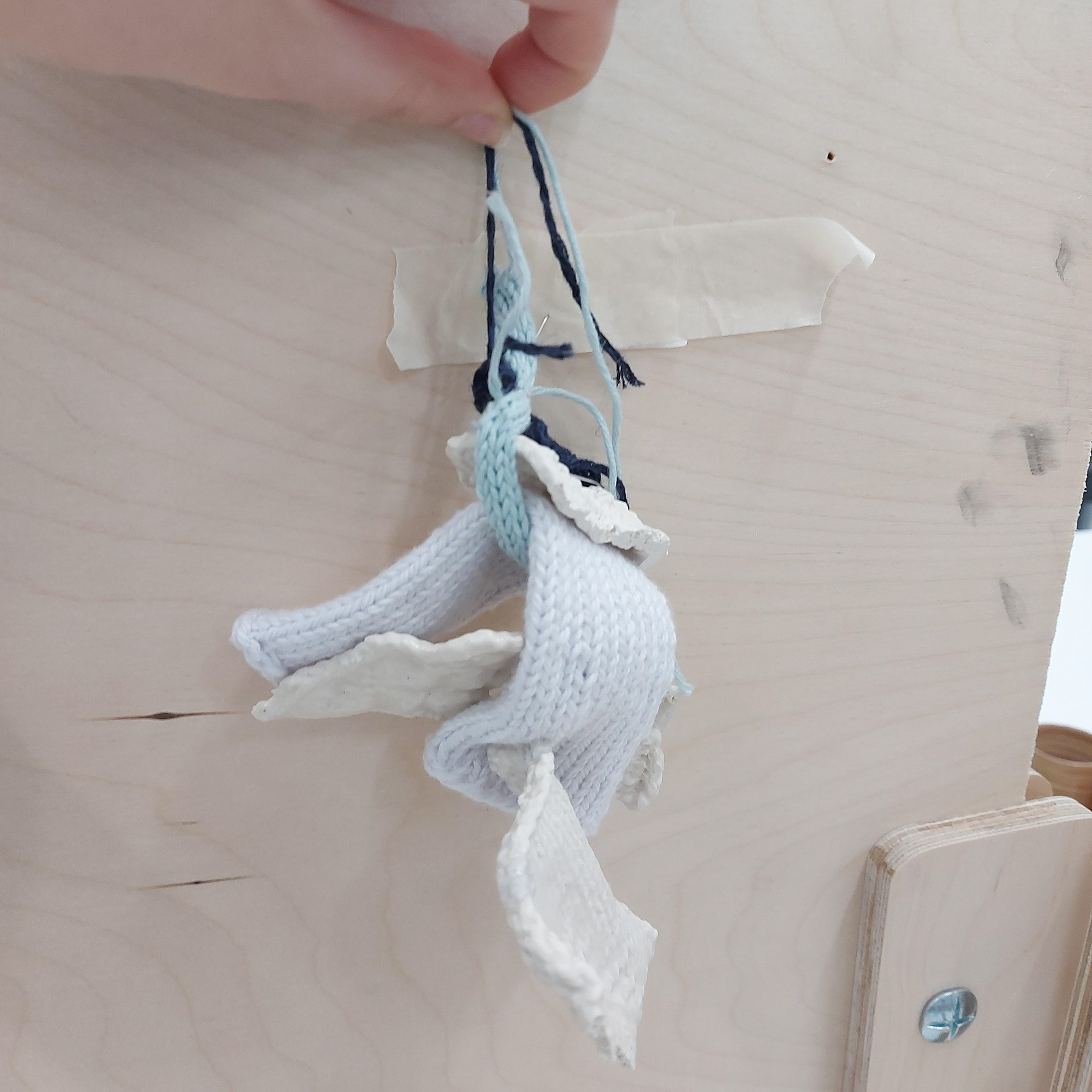
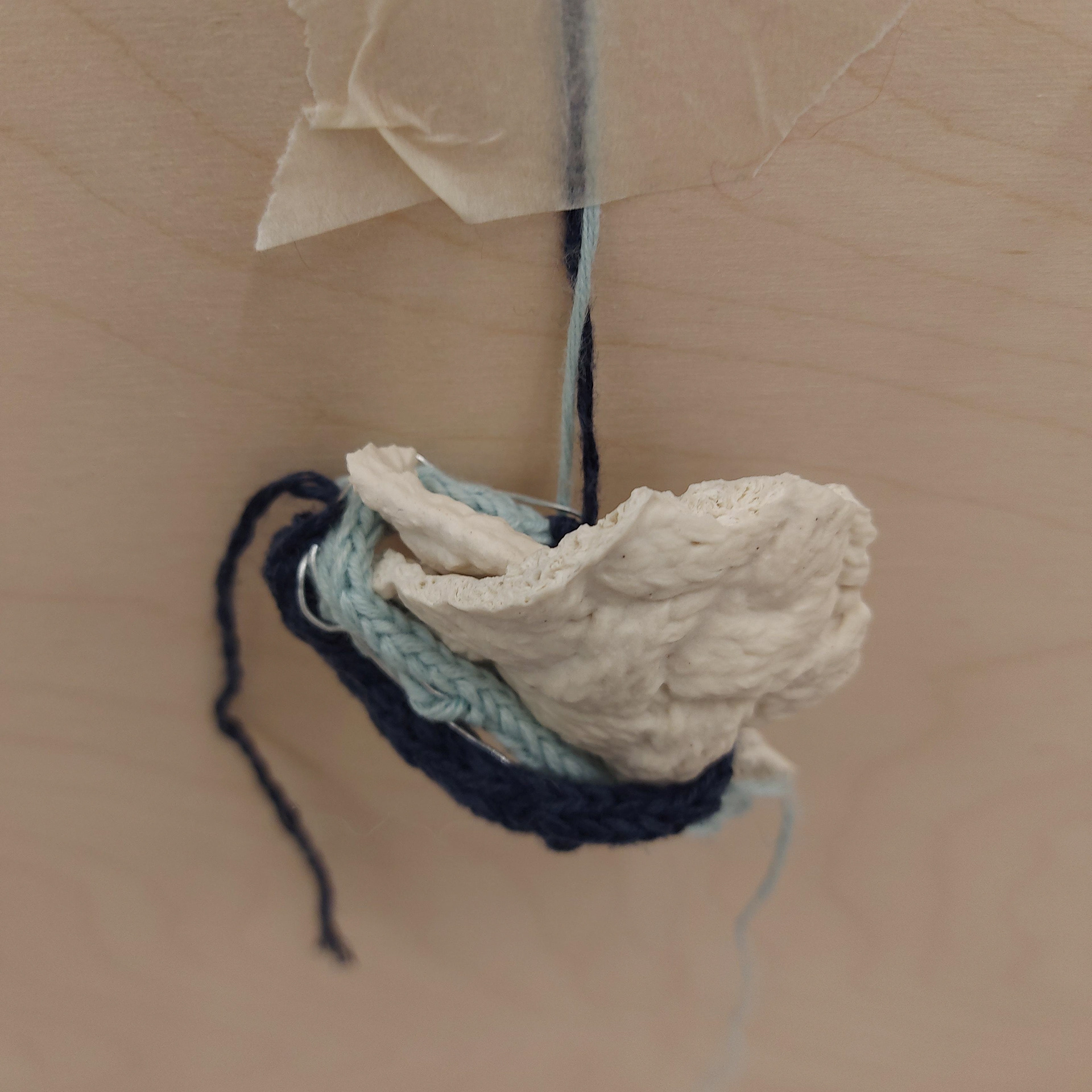
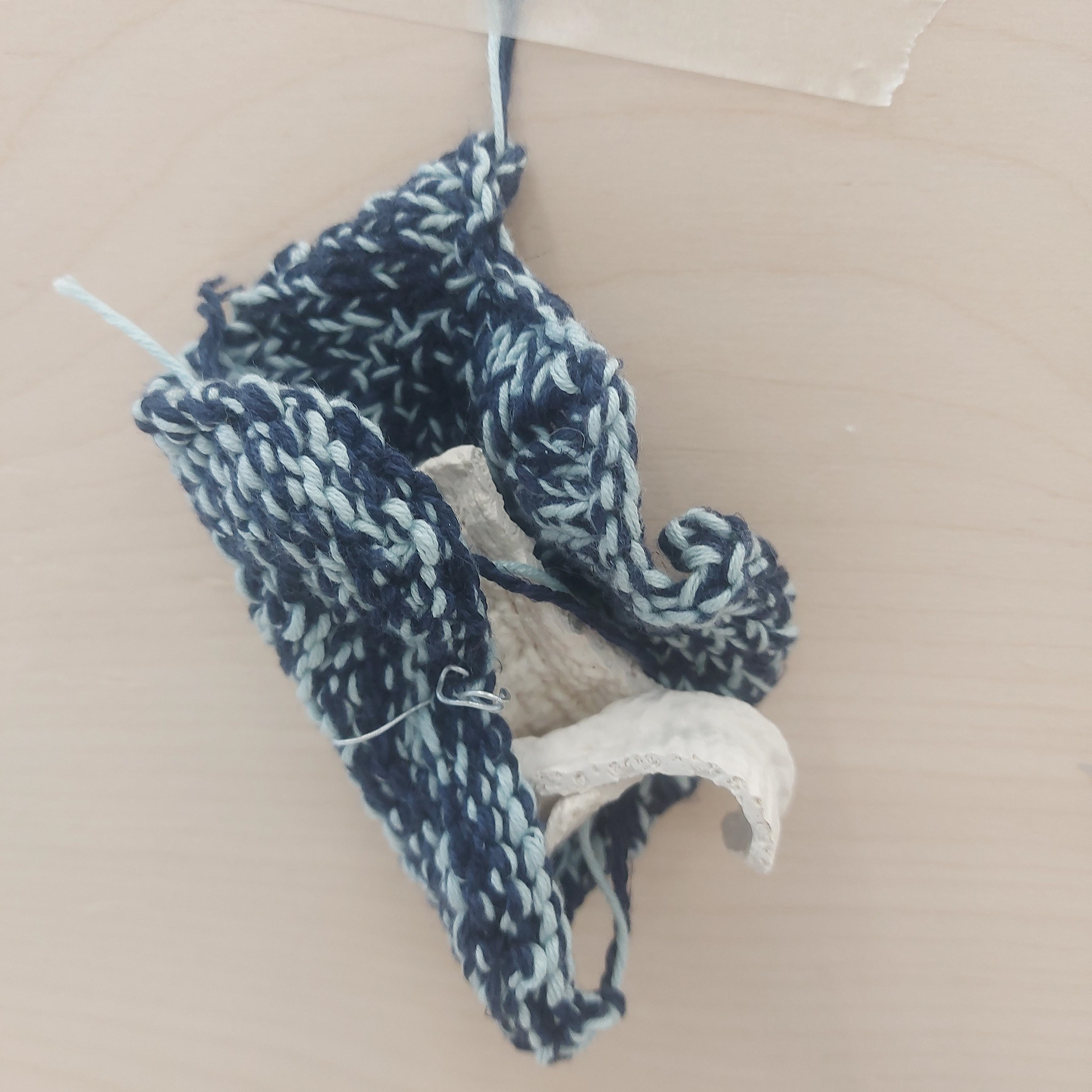
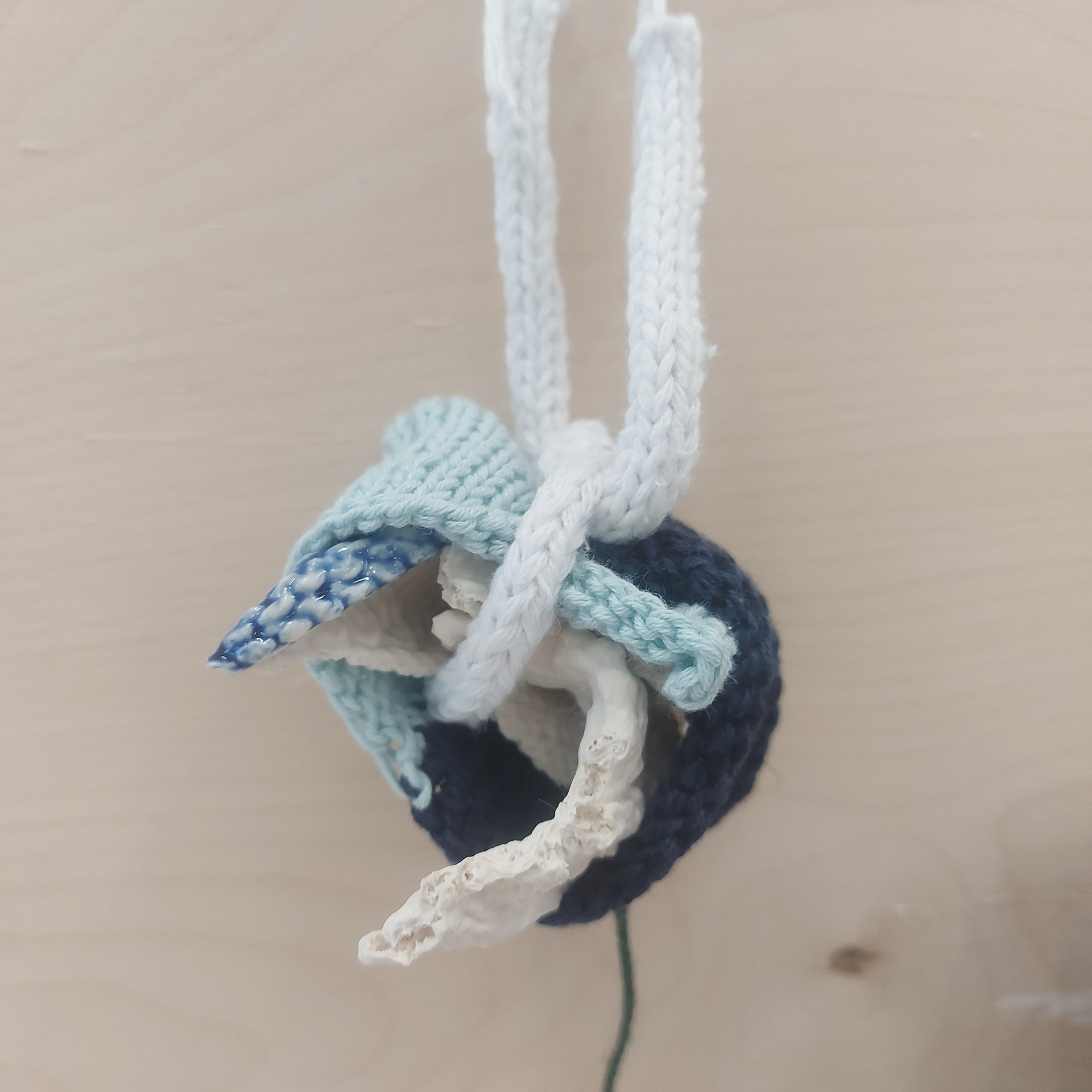
I continued using a mix of the cotton yarn and the viscose, cotton and linen mix yarn. I used glue dots to stick the ceramic from different points and see how they flow. I prefererred when the knitted pieces were wrapped around the ceramic as they seemed to go together better visually compared to the ceramic pieces hanging off the material.
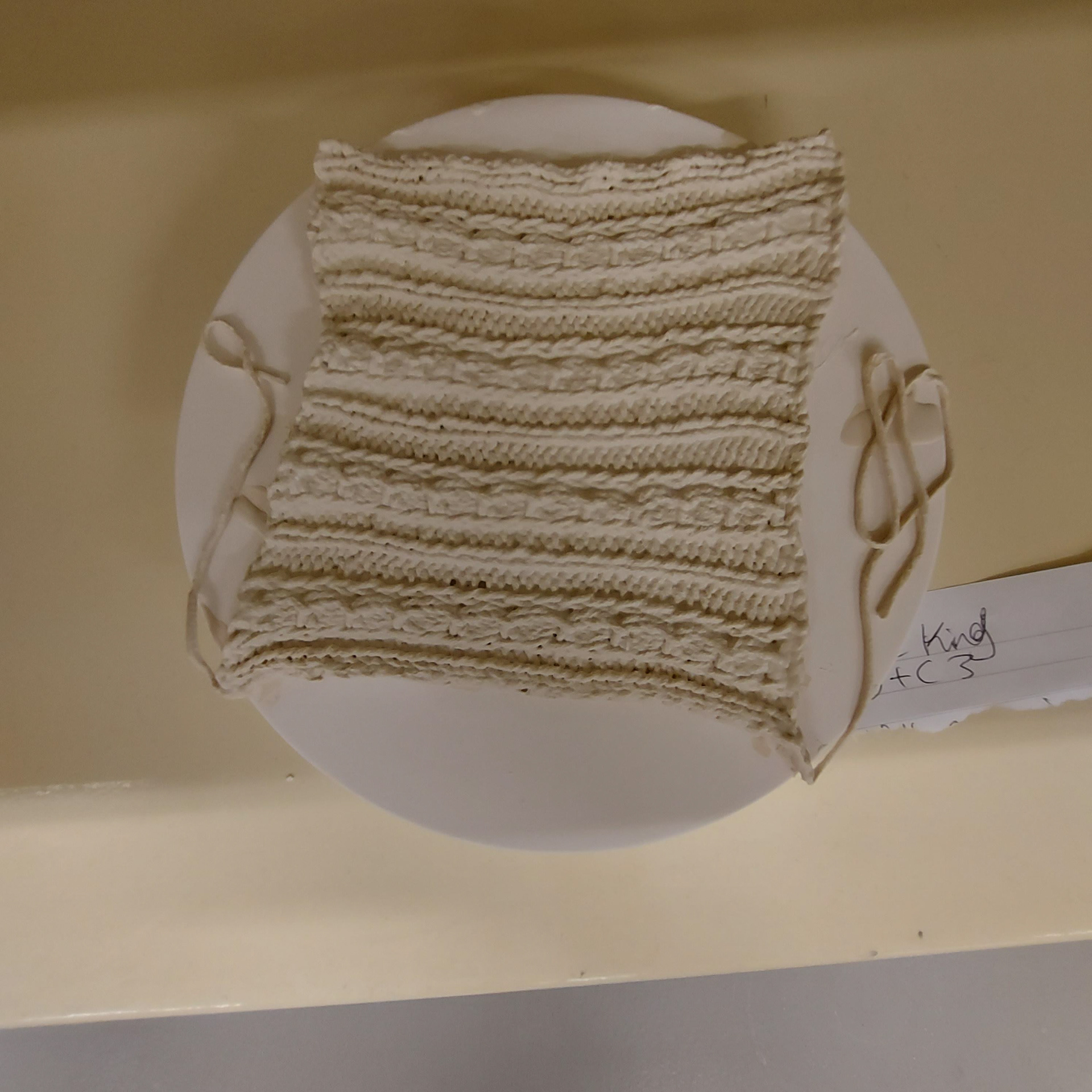
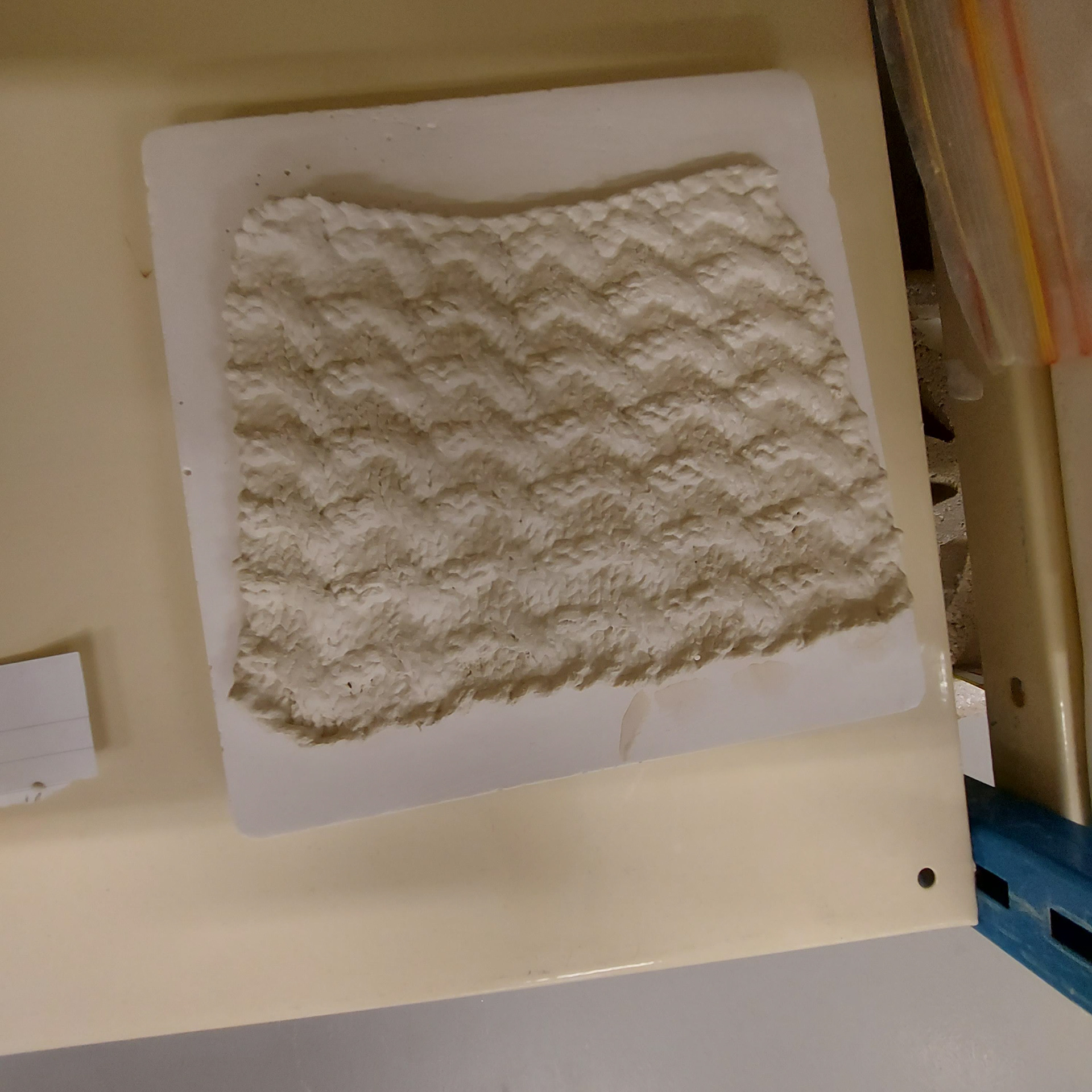
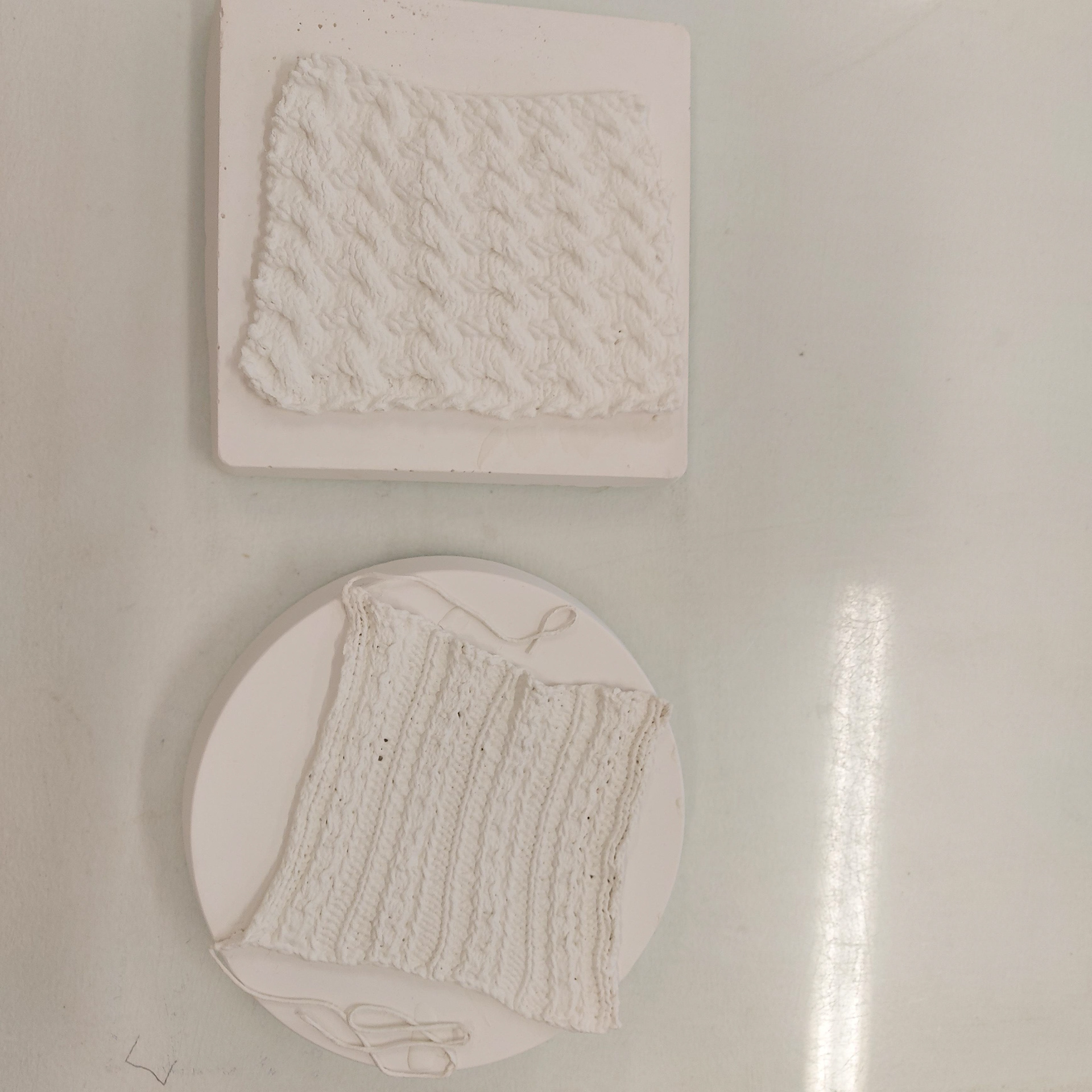
Above are two samples cast in porcelain, one in dk weight and one in 4 ply. I decided to use cabled stitches for both as it may make the break thicker due to the stitches crossing over. When the pieces come out I would like to see if there's any difference compared to the clay slip I was using before when seeing the inside of the stitches. I would also like to see how it comes out in the kiln as I don't know how it will change after bisque compared to my previous pieces.


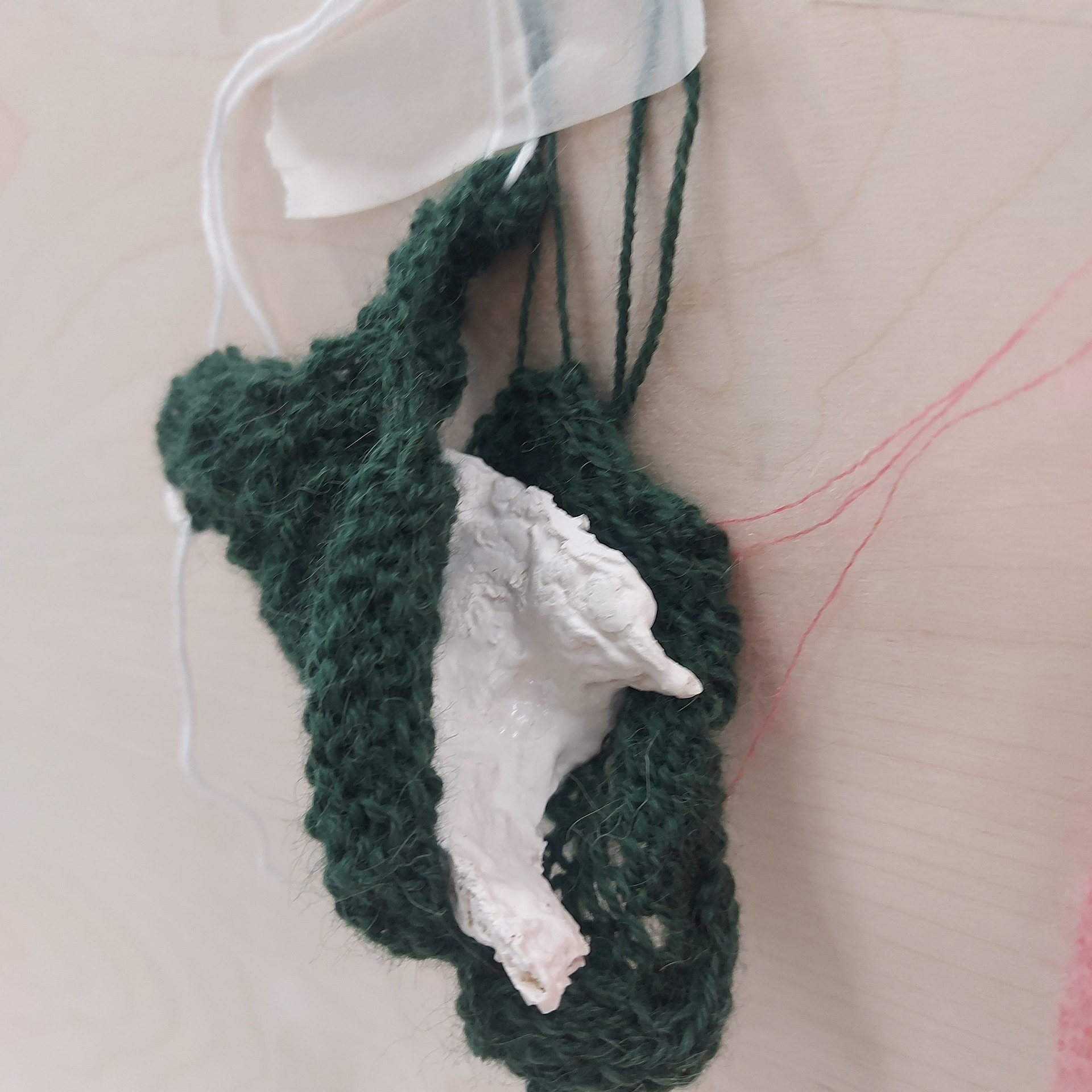
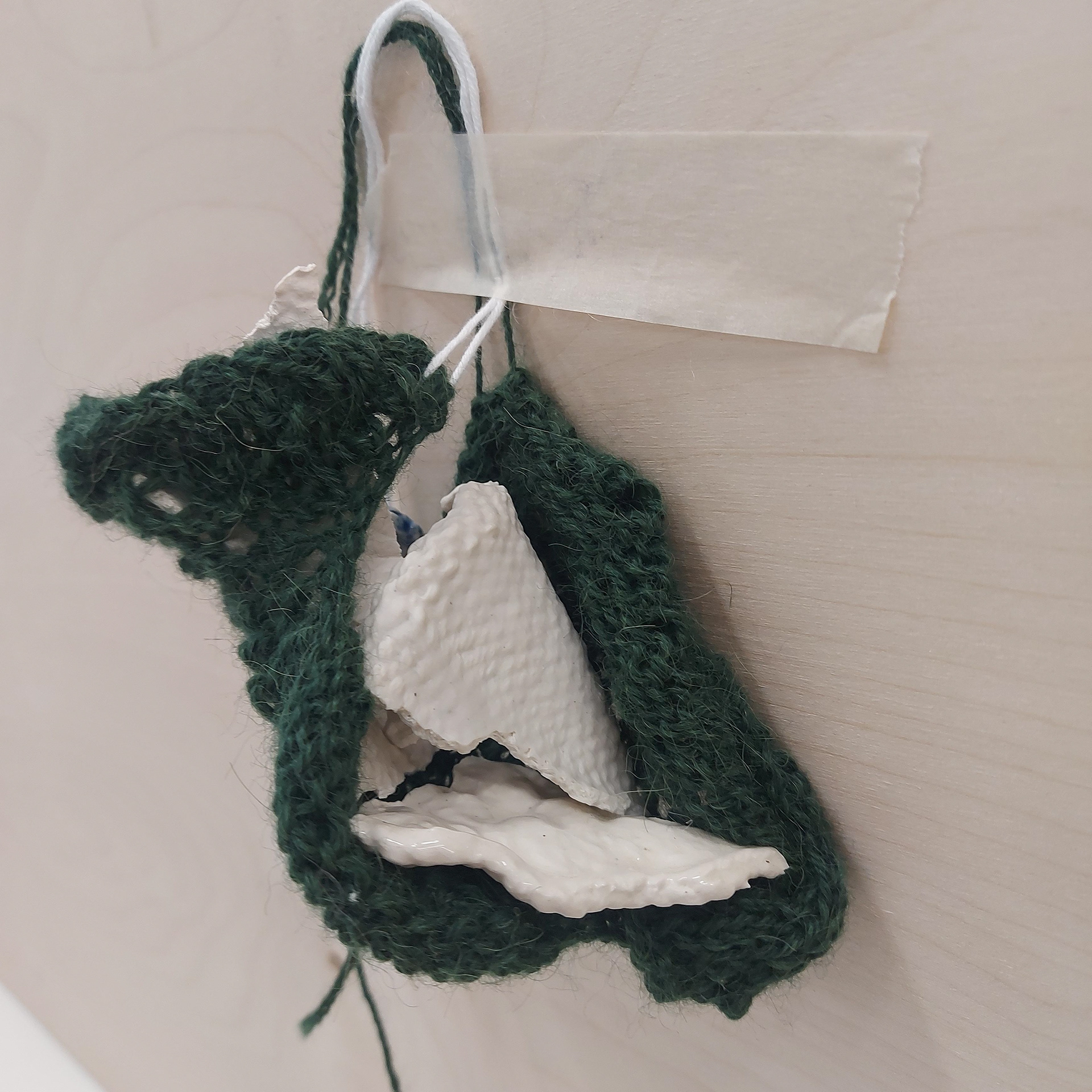
I knitted a mohair sample to see how the pieces would sit in it compared to the alpaca yarn sample. I liked the feel of the mohair and it was interesting to see how it knitted as I was not familiar with this yarn. The fuzziness and the holes of the mohair acted as almost a velcro for the ceramic at times compared to more thicker and smoother yarns.
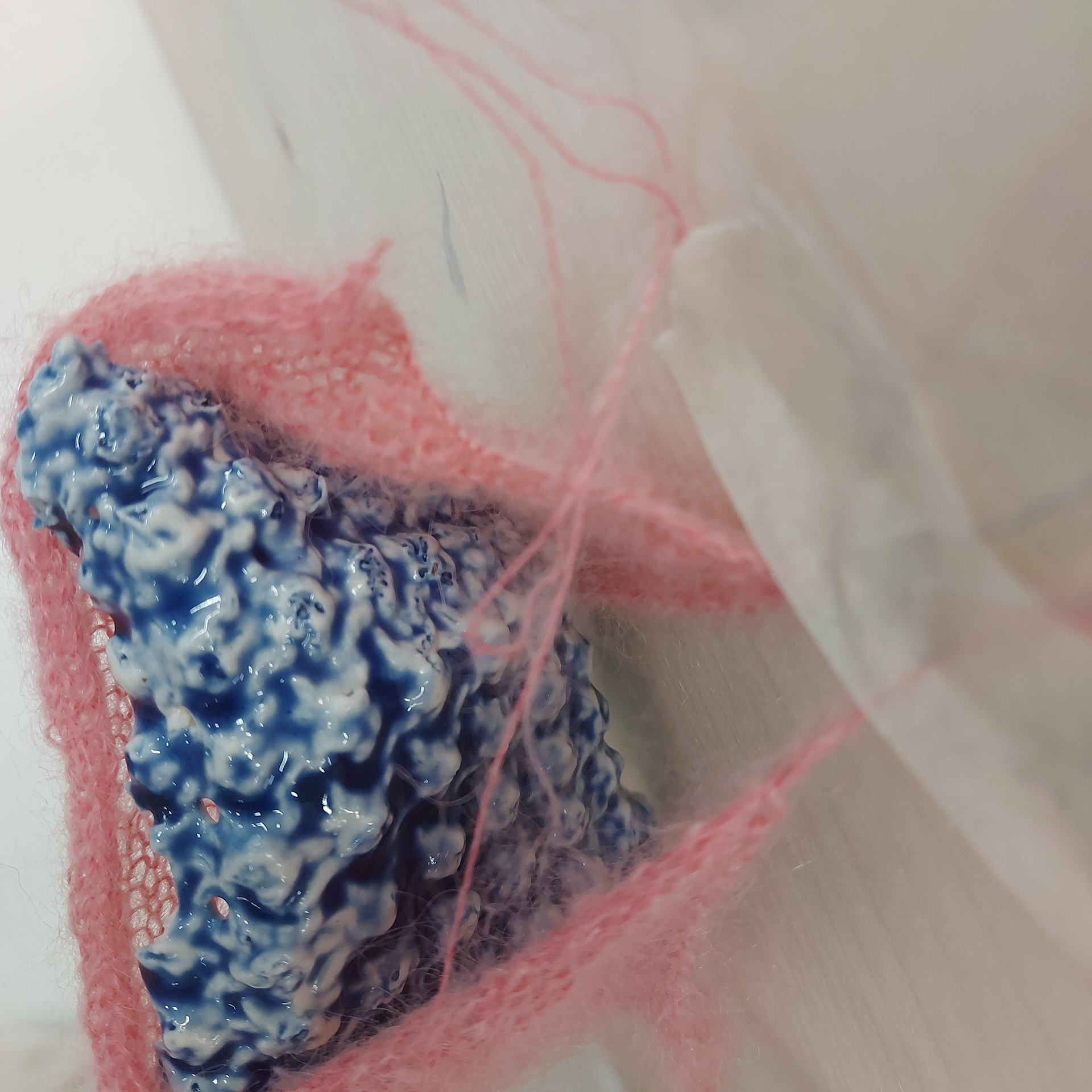
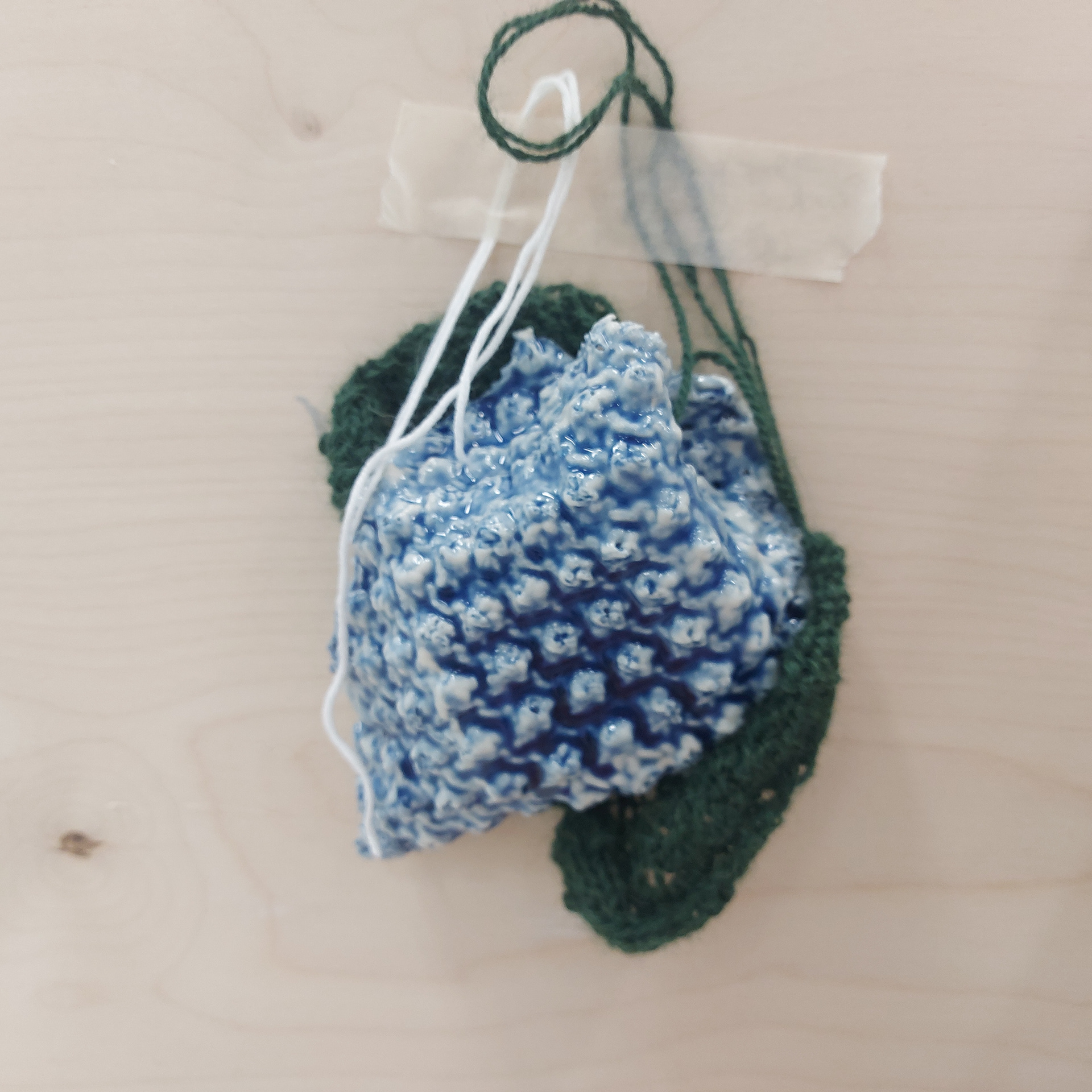

I looked out how my biggest ceramic piece could be held by different knitted pieces, often sitting in a stable place due to its size.
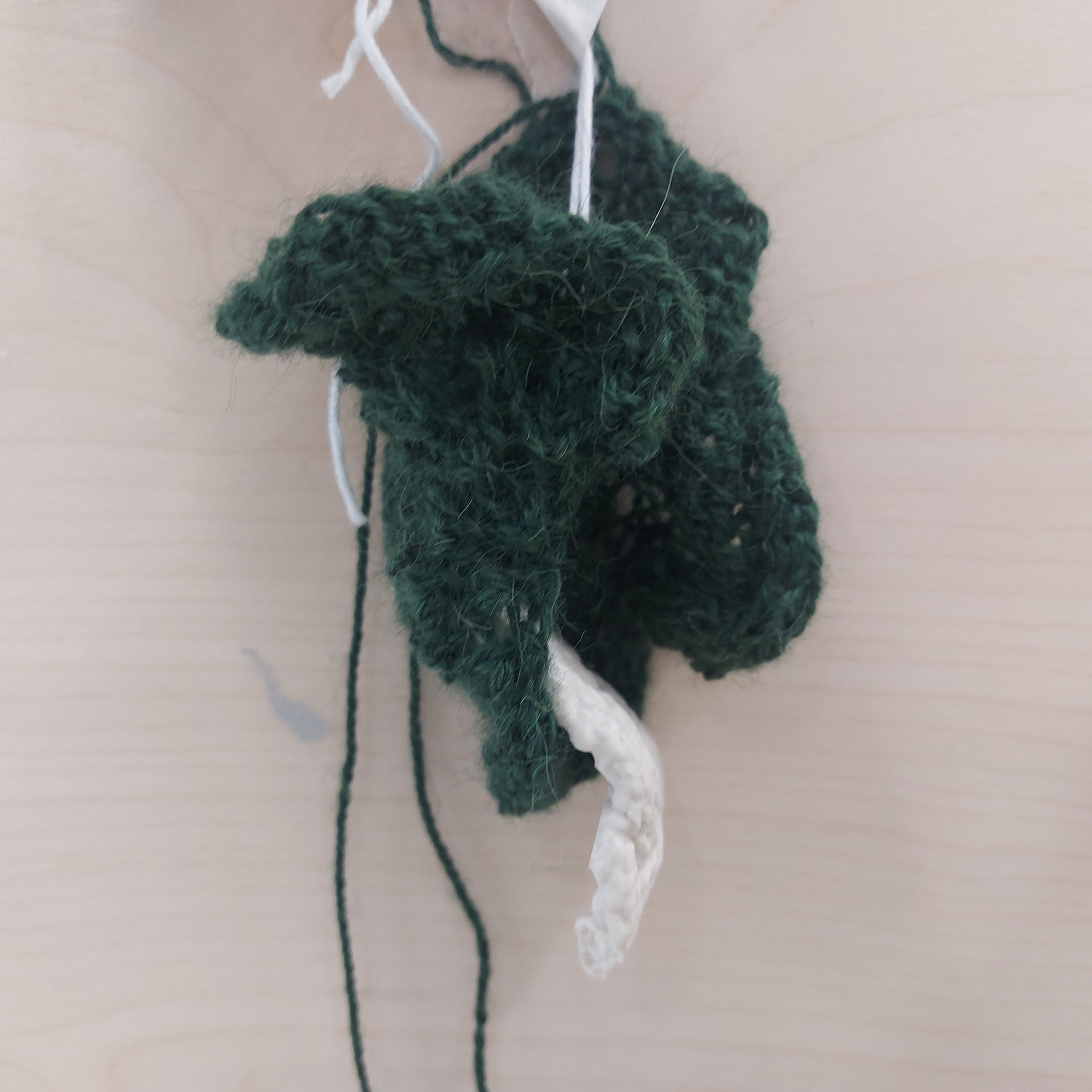
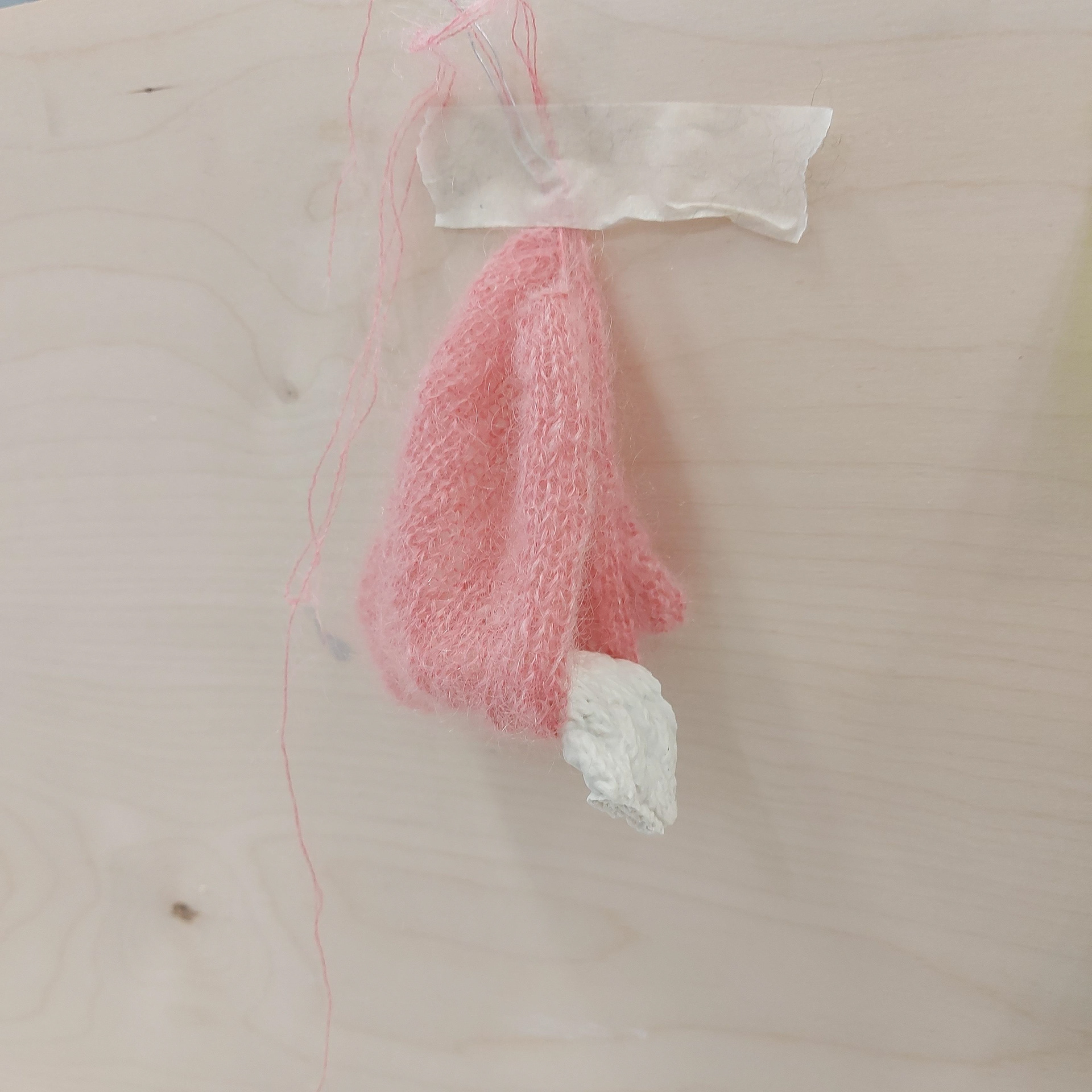
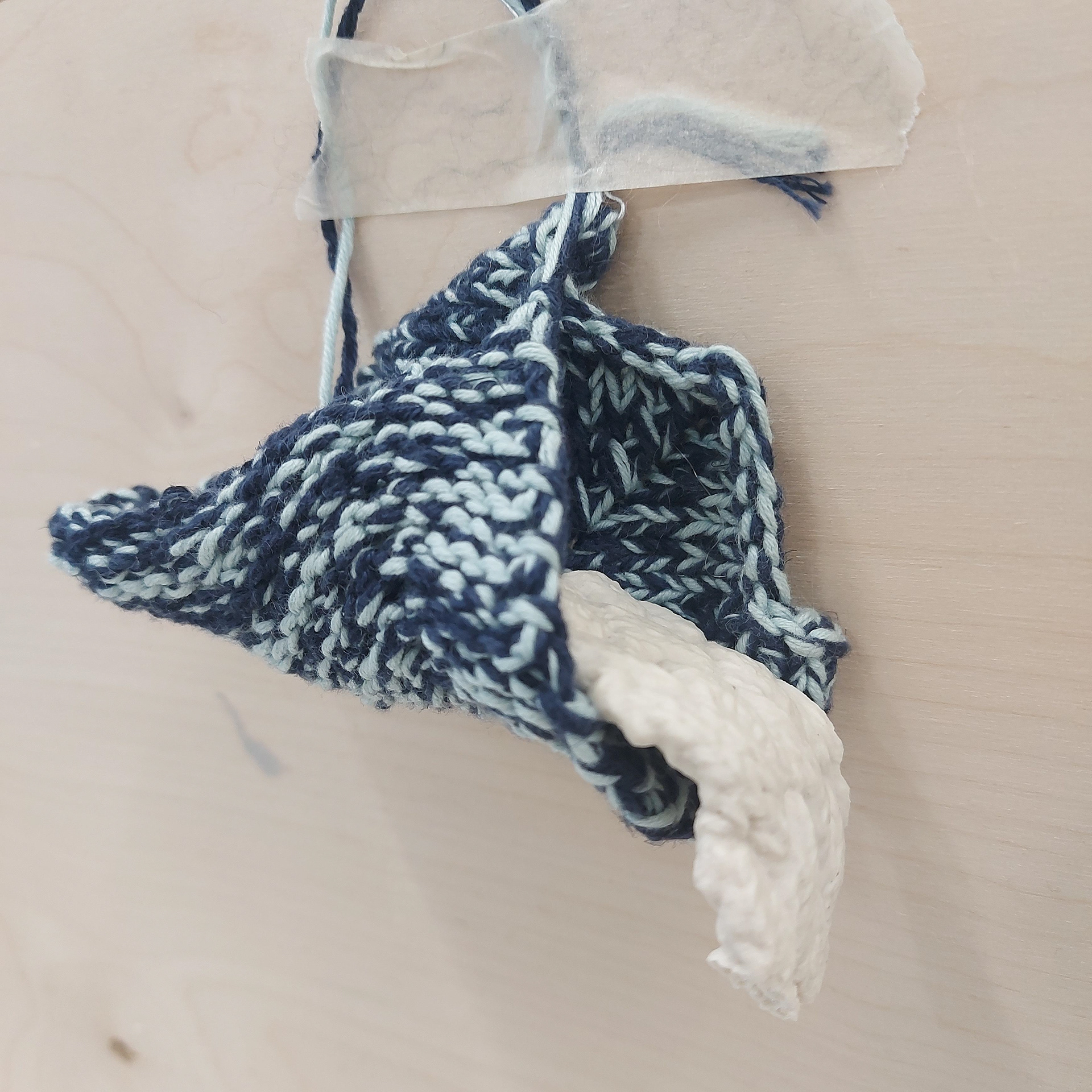
I wanted to see how the knitting would sit with just one curved ceramic piece sitting at the edge. I found that the different yarns hung differently when dealing with the same weight.

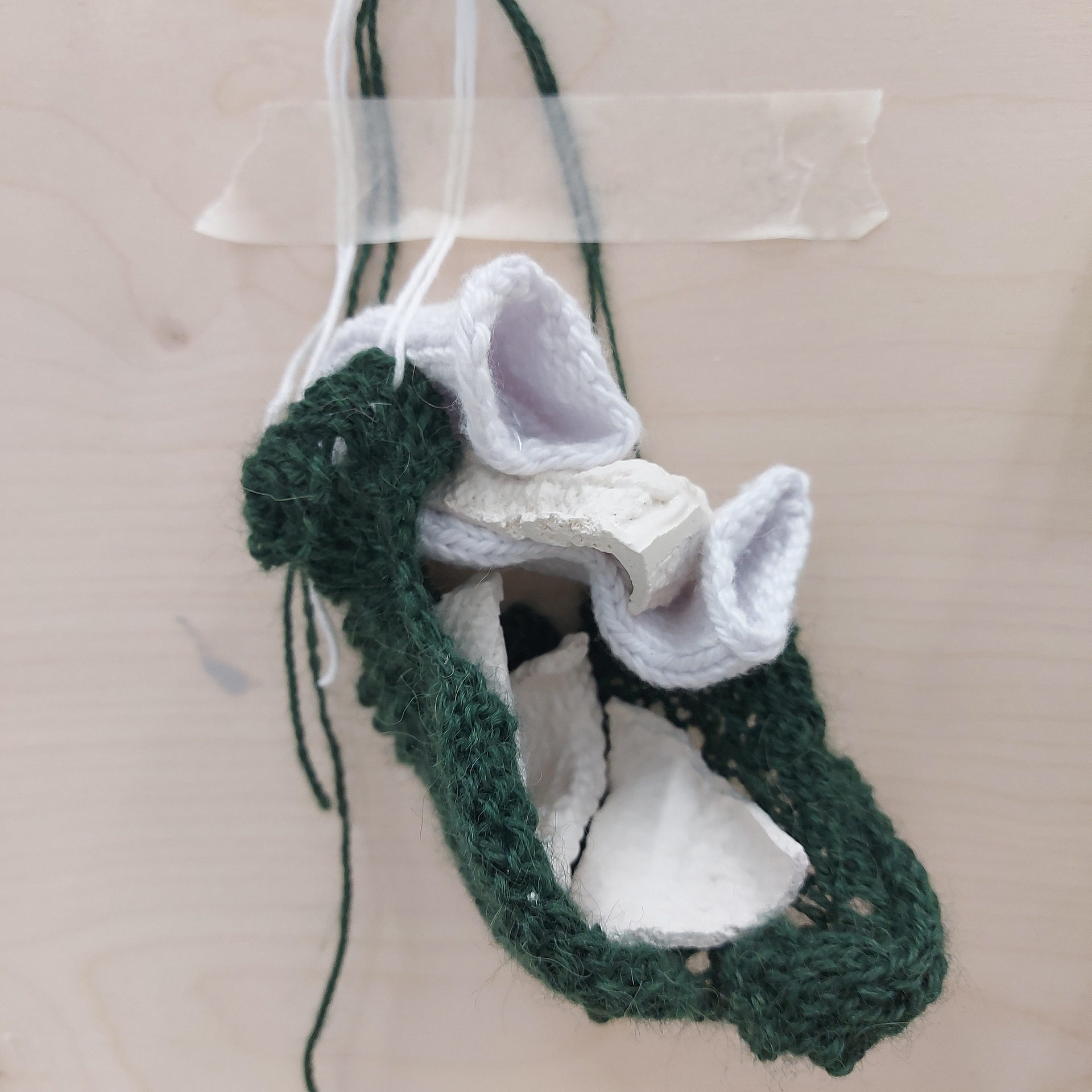

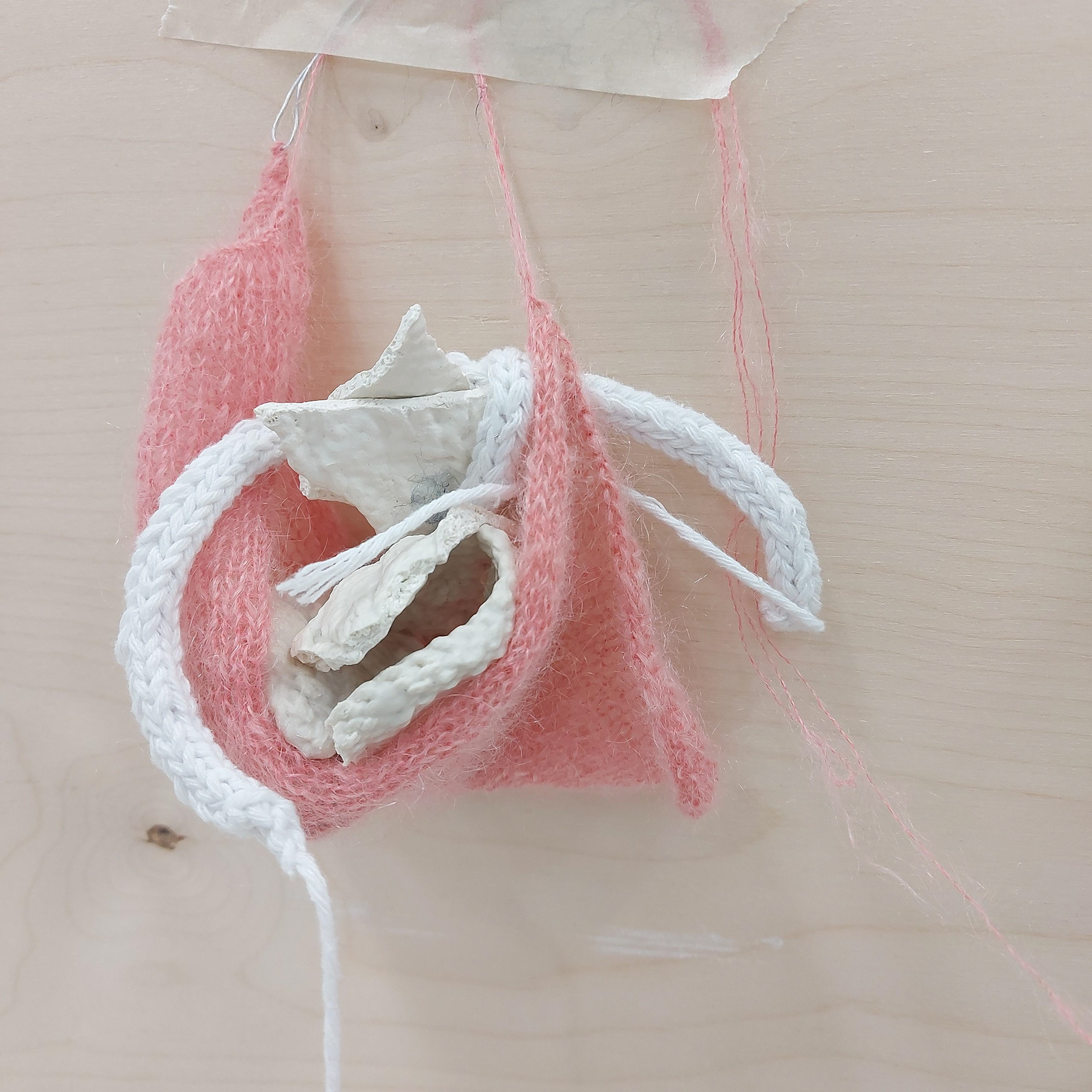
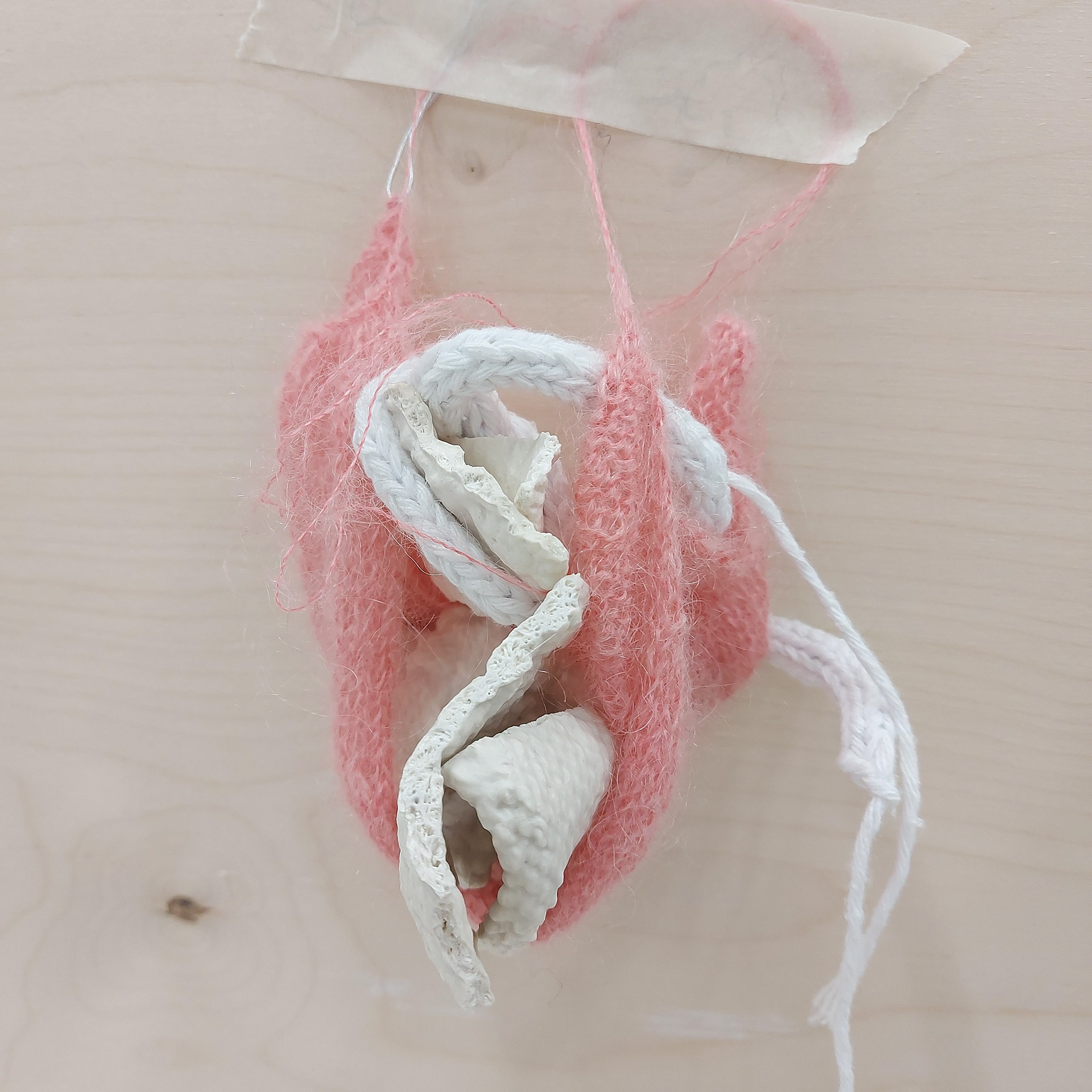
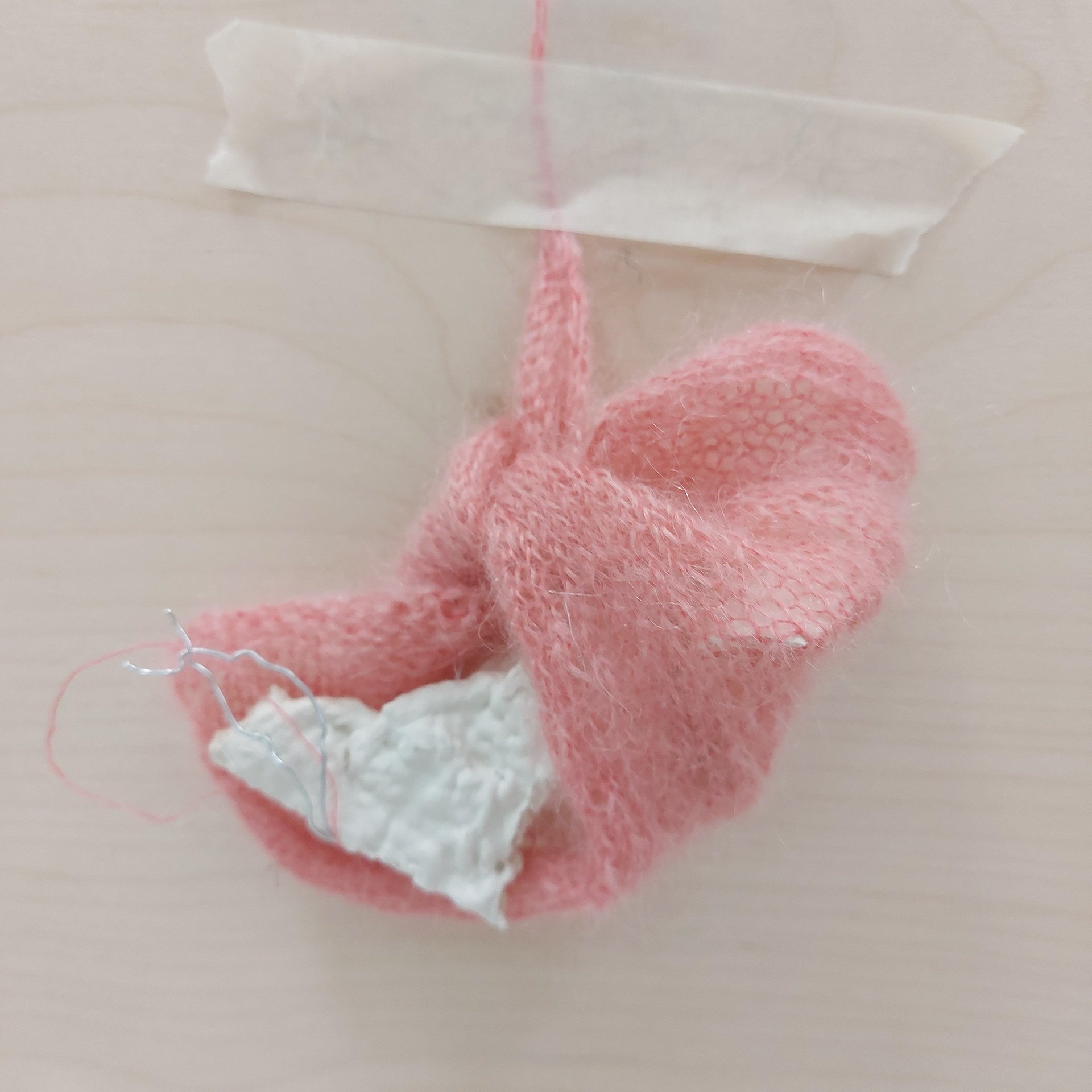



Above are different photos of the knitted materials when hanging with lots of ceramic pieces or having multiple knitted pieces together. The green lacy knitting and the mohair knitting was my favourite materials to work with due to their holes and fuzziness which the ceramic pieces were able to find points within to hold themselves.


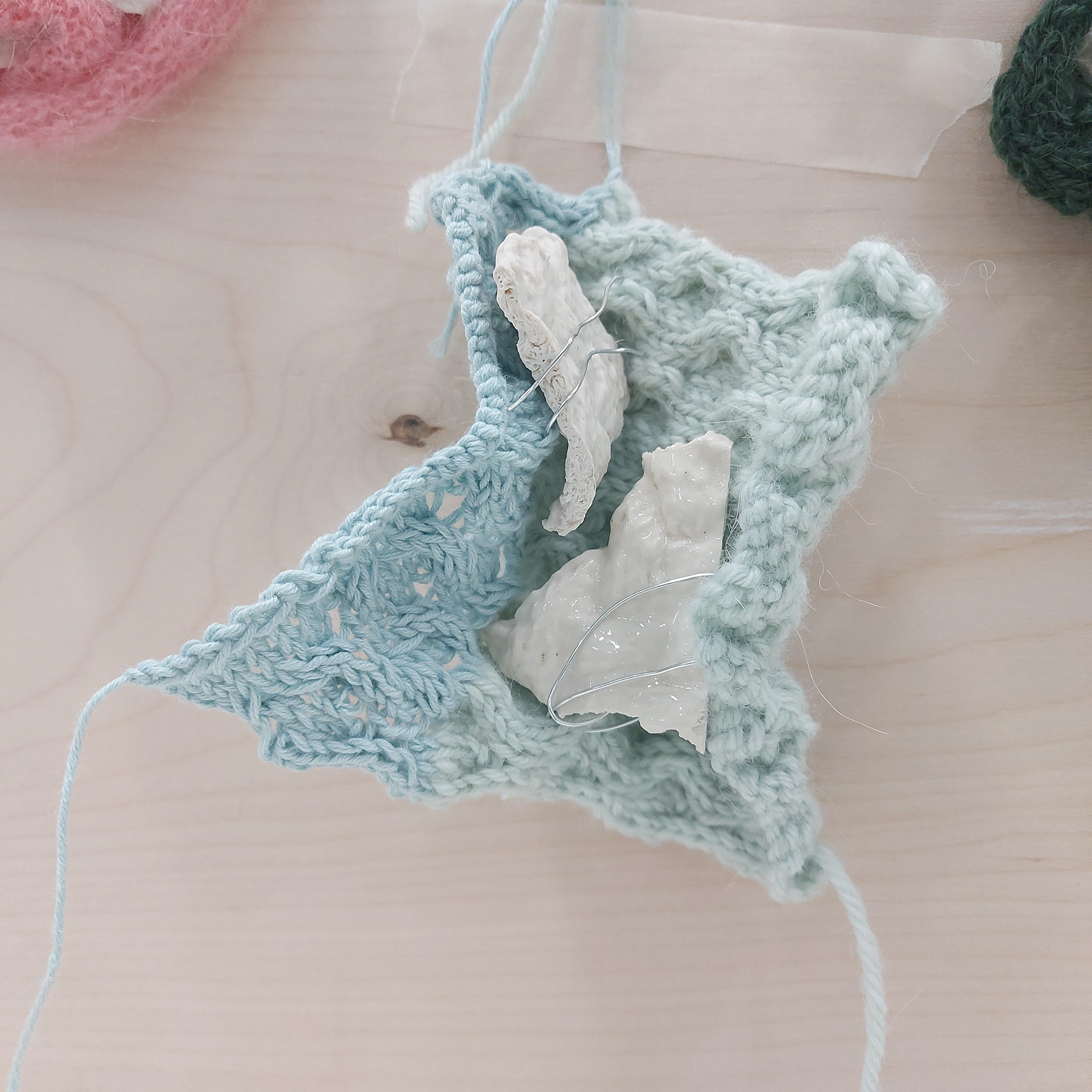
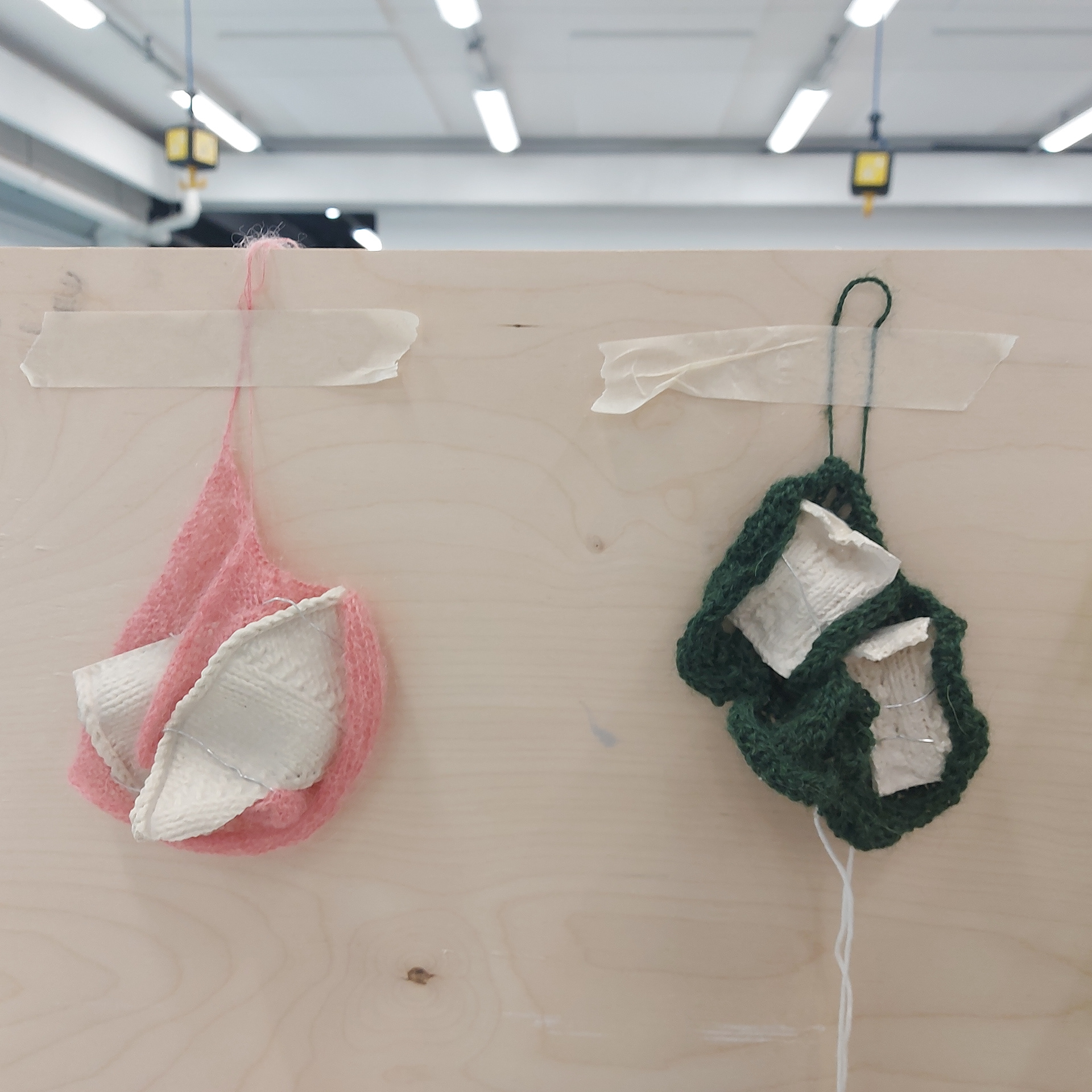
Here are some samples with multiple ceramic pieces involved. My favourite fastenings to use have been metal wire due to its versatility and ability to be woven into the knitted material. I have also liked to use the ends of the knitted material to hang them and wrap around different ceramic pieces.


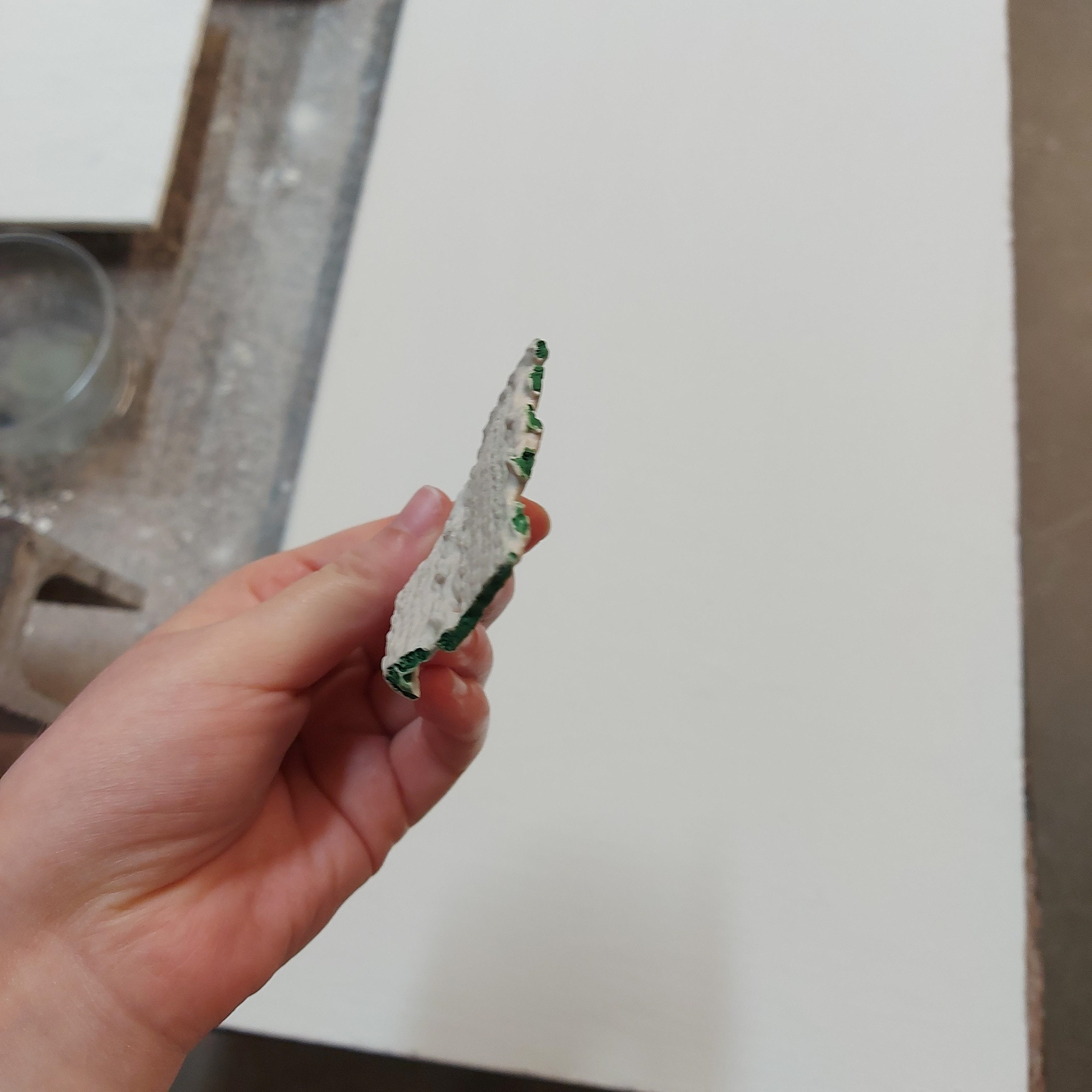
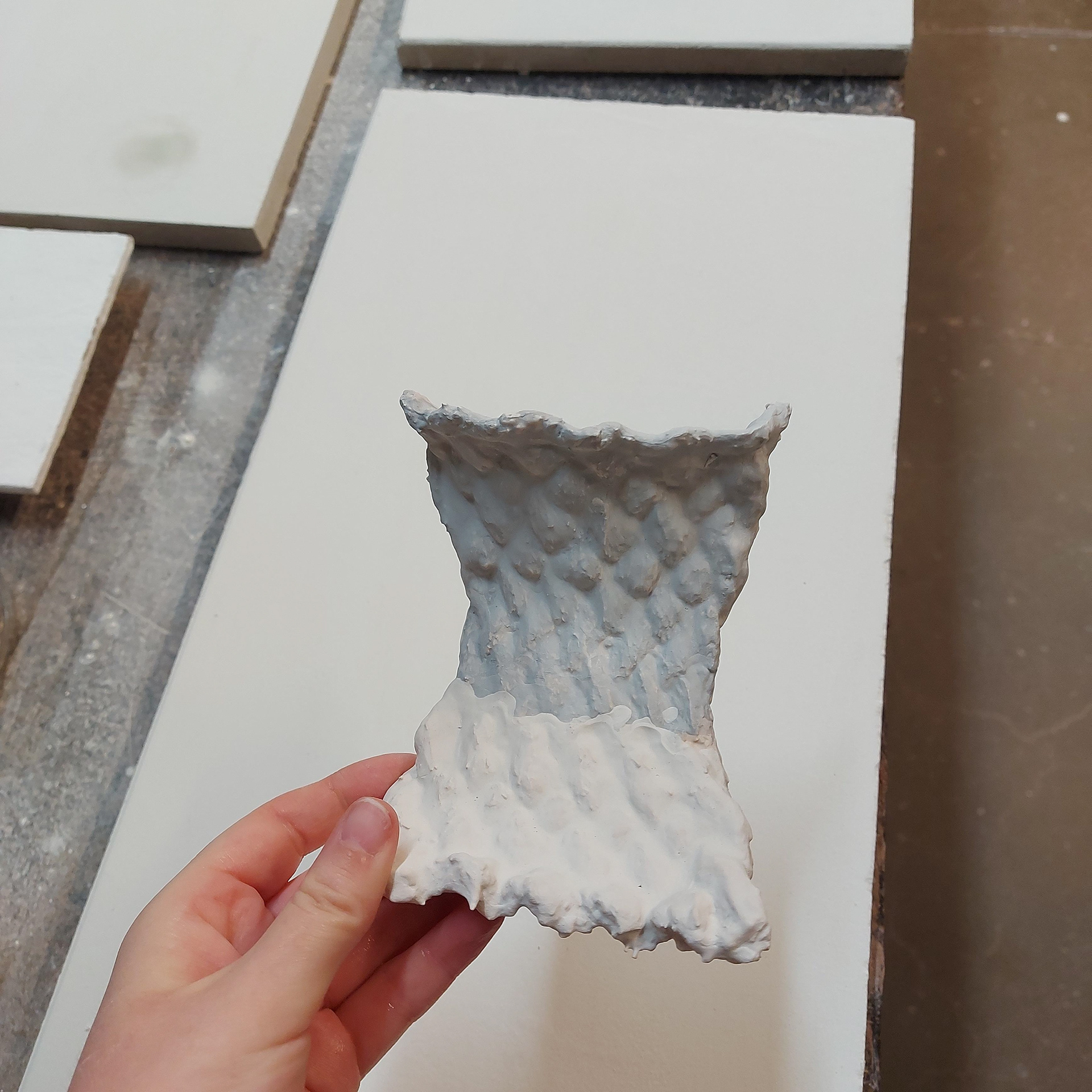
Glazed pieces before they get fired to stoneware. I would like to utilise the holes within the ceramic and see how I can utilise these with knitted material. I would like to cut the thick basketweave stitch to get a clearer look at the inside of the clay due to the thickness of the stitches.
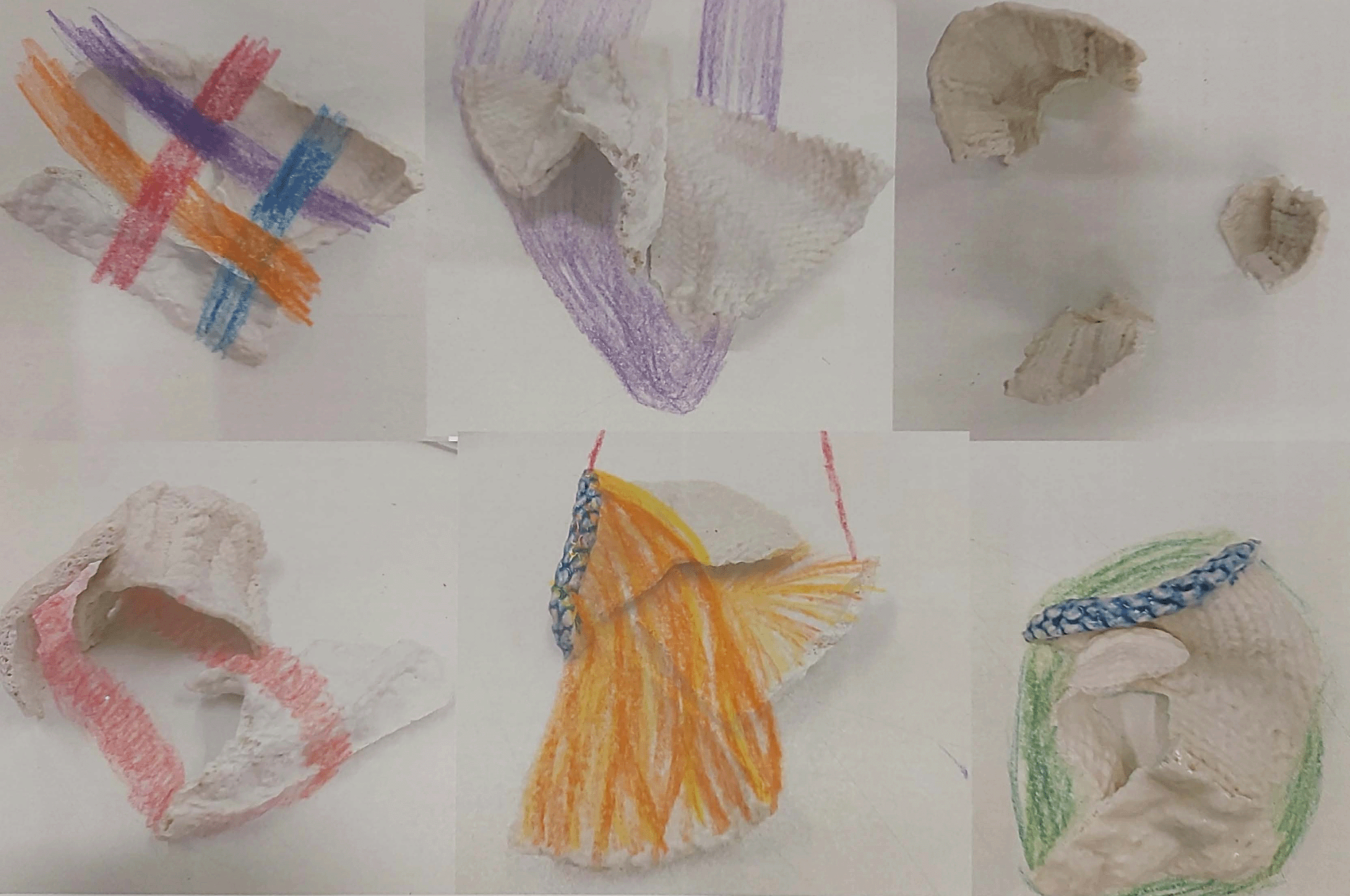
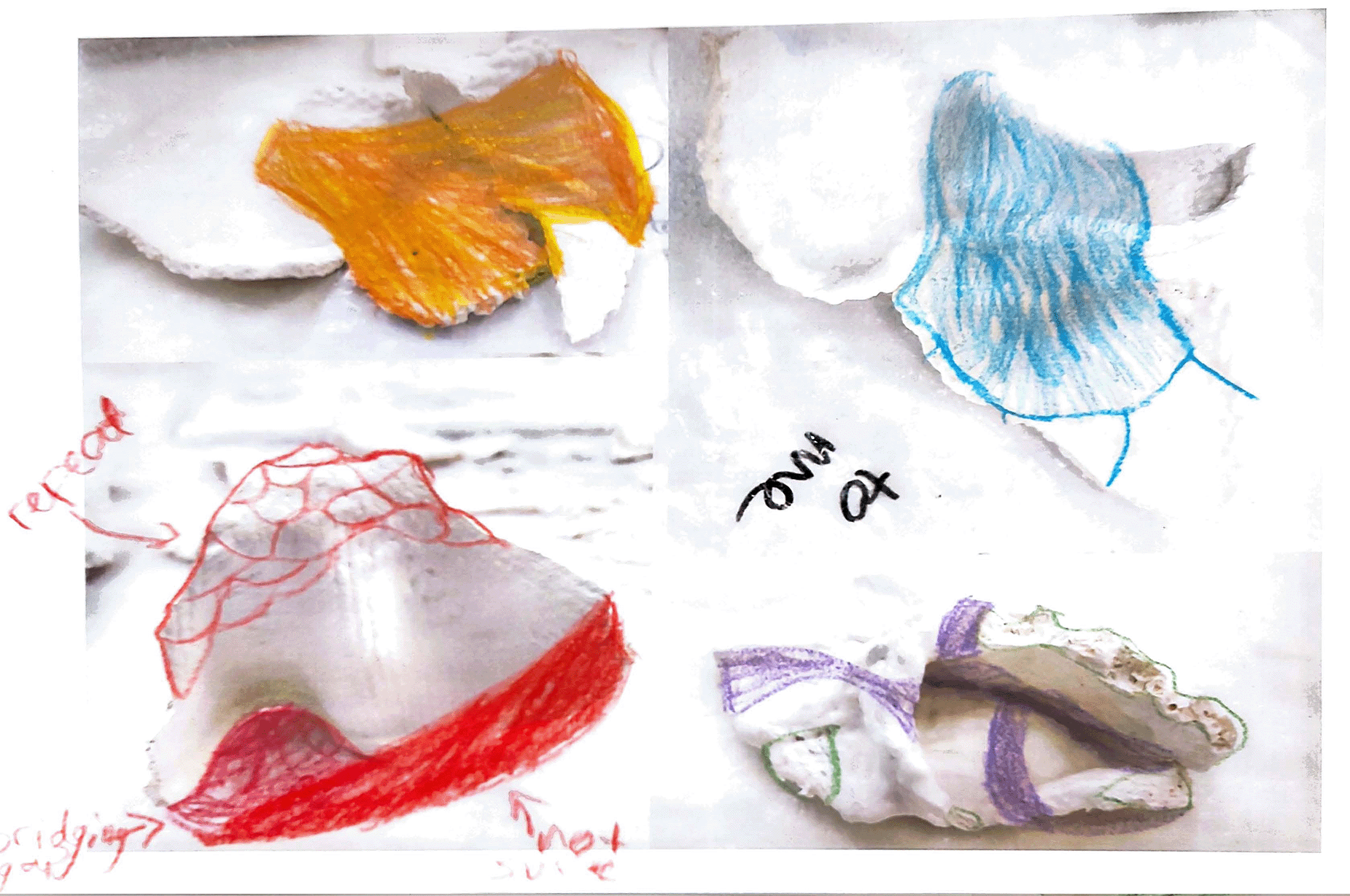

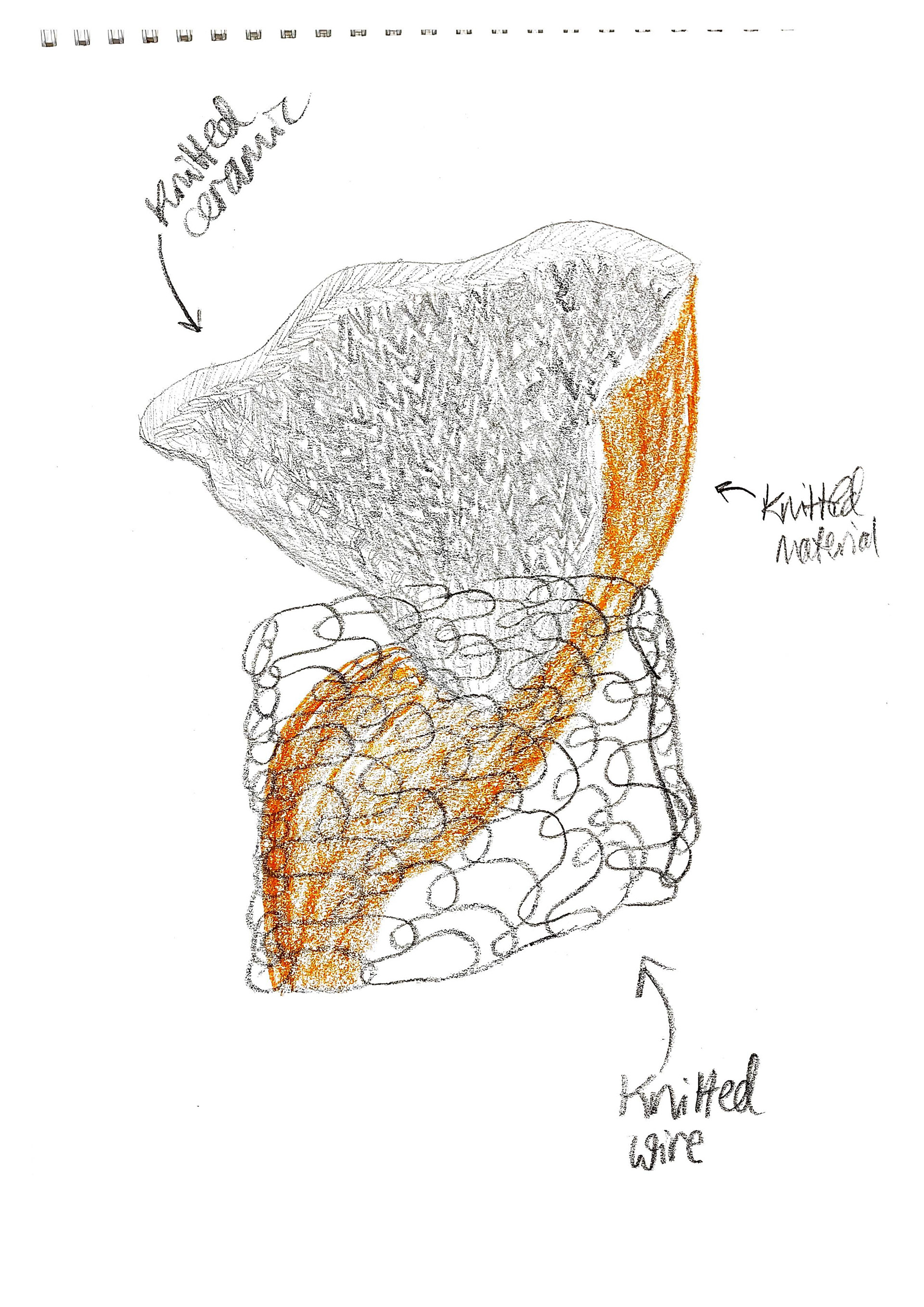

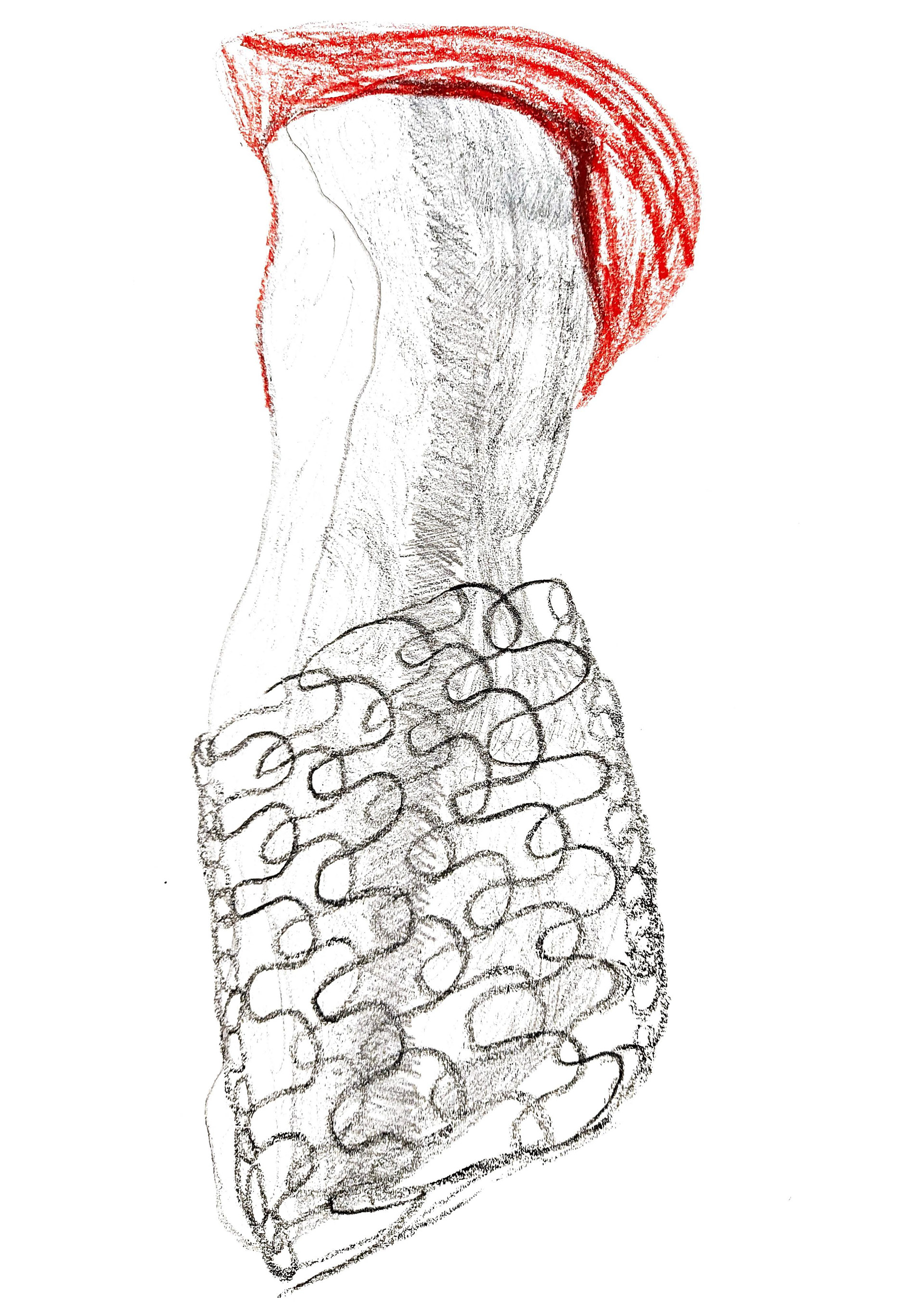
Some sketches using the knitted wire sample I made and looking at the samples around me. The knitted wire sample idea came from a book that I was reading called Mixed Media Art in Three Dimensions about experimentation, one of the ideas was to use wire as a medium to knit with as its very malleable. I did find it difficult to knit with but it was interesting to see if I could knit a more rigid material.
Following on from a tutorial, I became aware that I couldn't see all sides of the pieces I was hanging and wanted to stay within this part of the experimentation by seeing what happened when I hung these different ceramic and textile samples while connecting them from a top surface rather than a side surface. I will make a box to suspend my work from, and look further into texture and produce more knitted materials. The idea of using beads or different materials is an interesting idea which I will use within my experimentation.